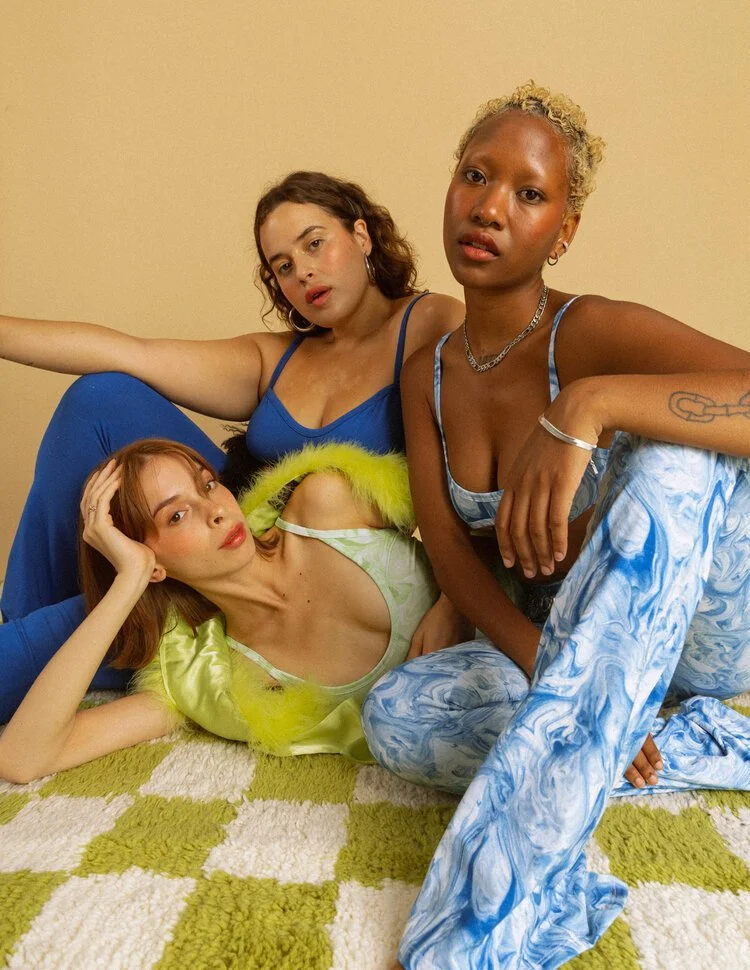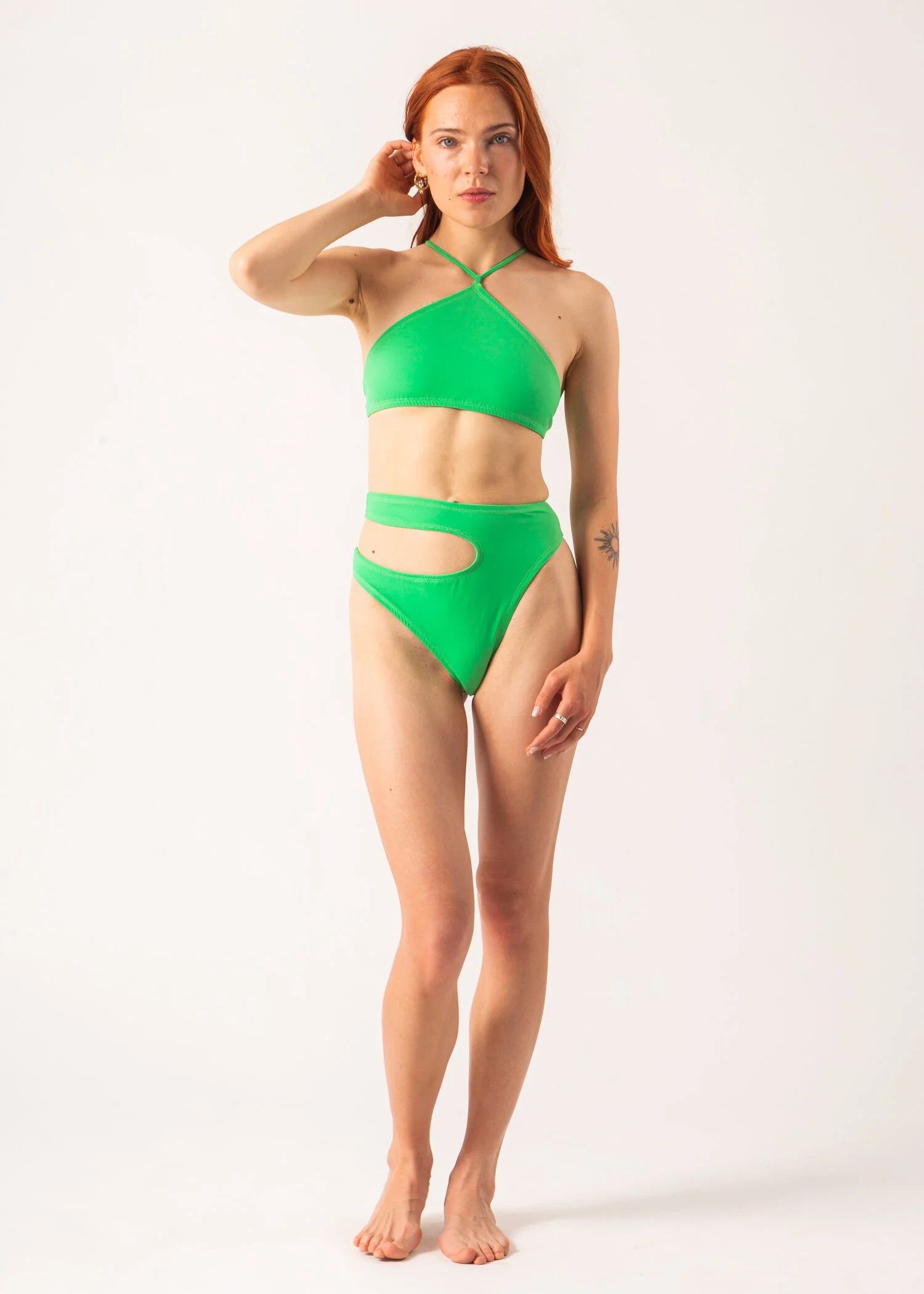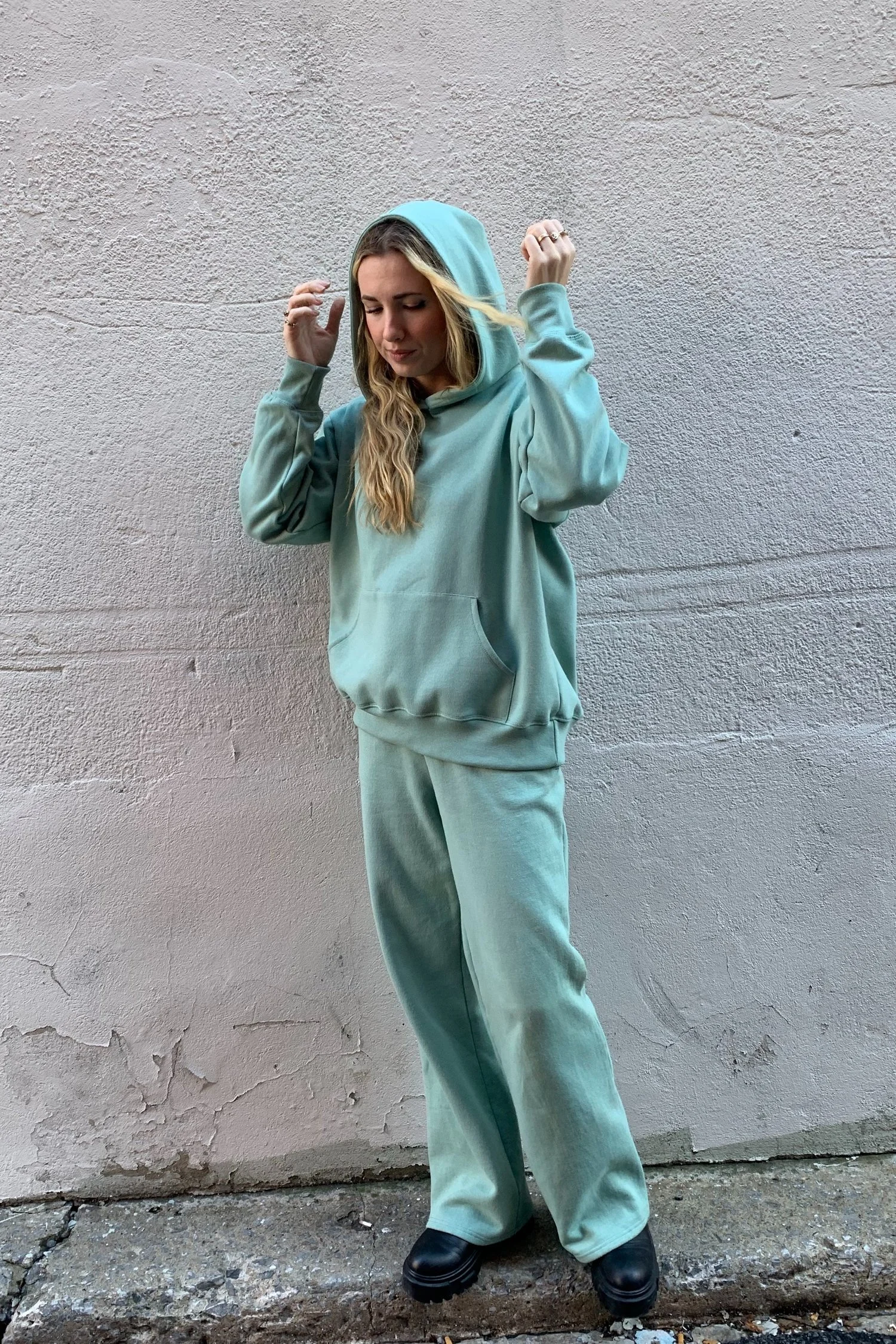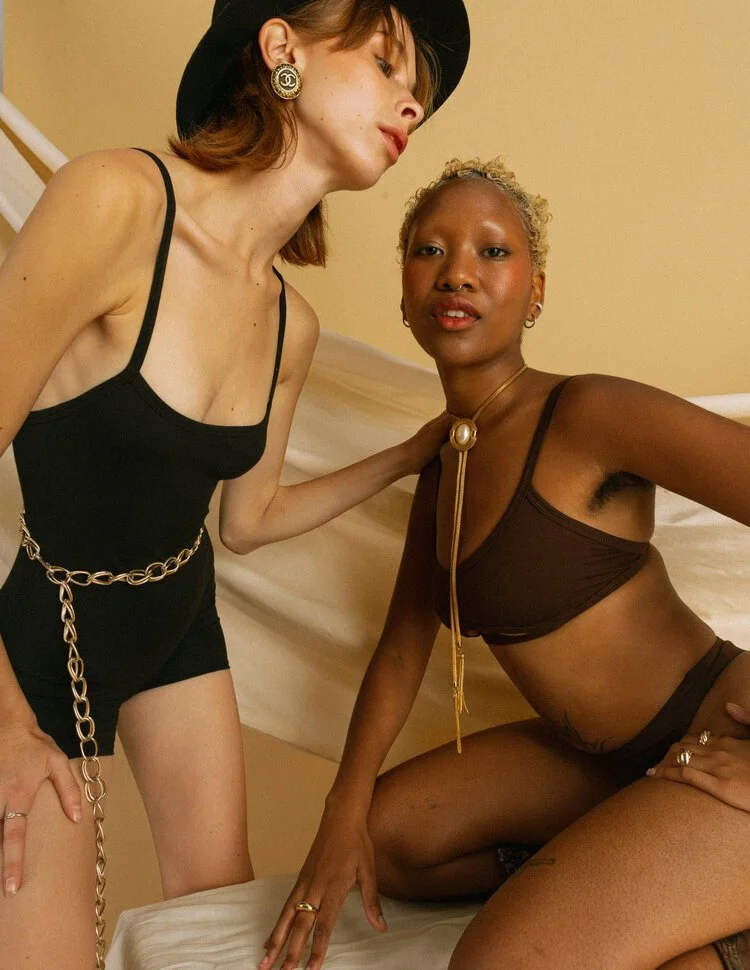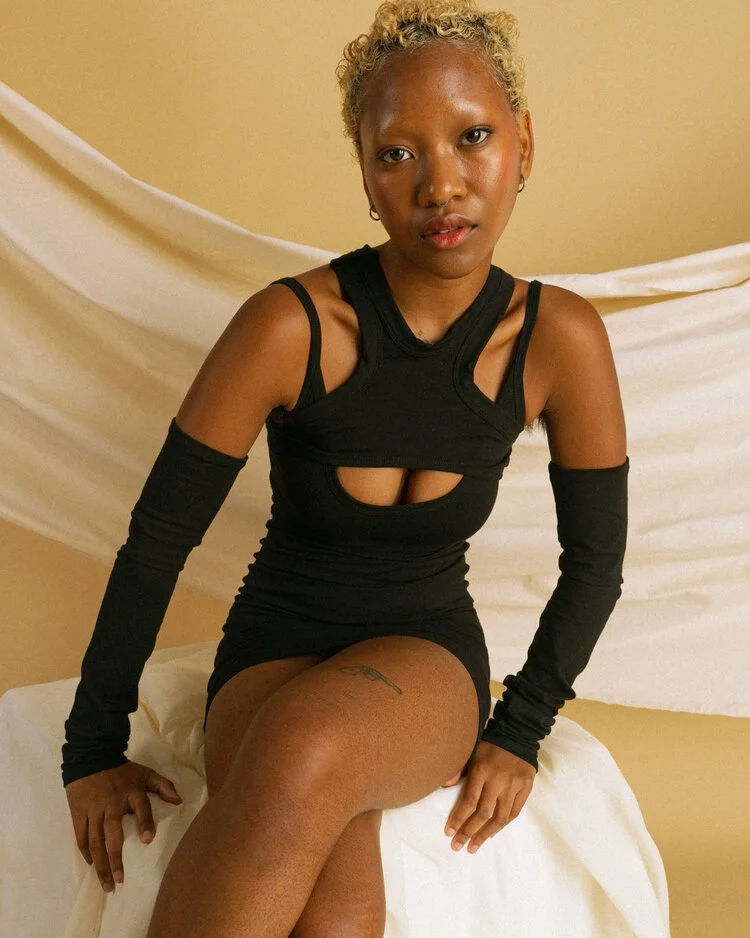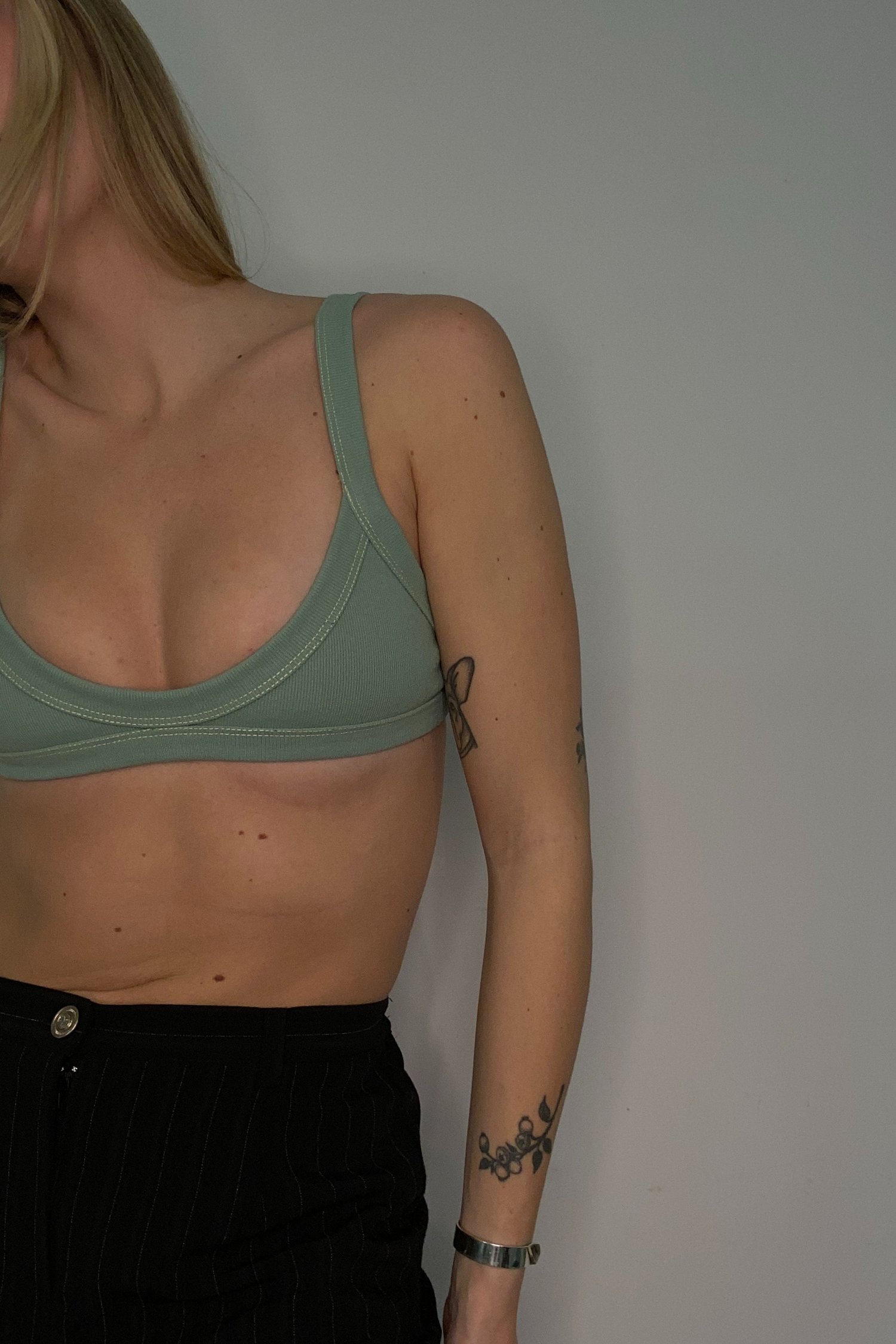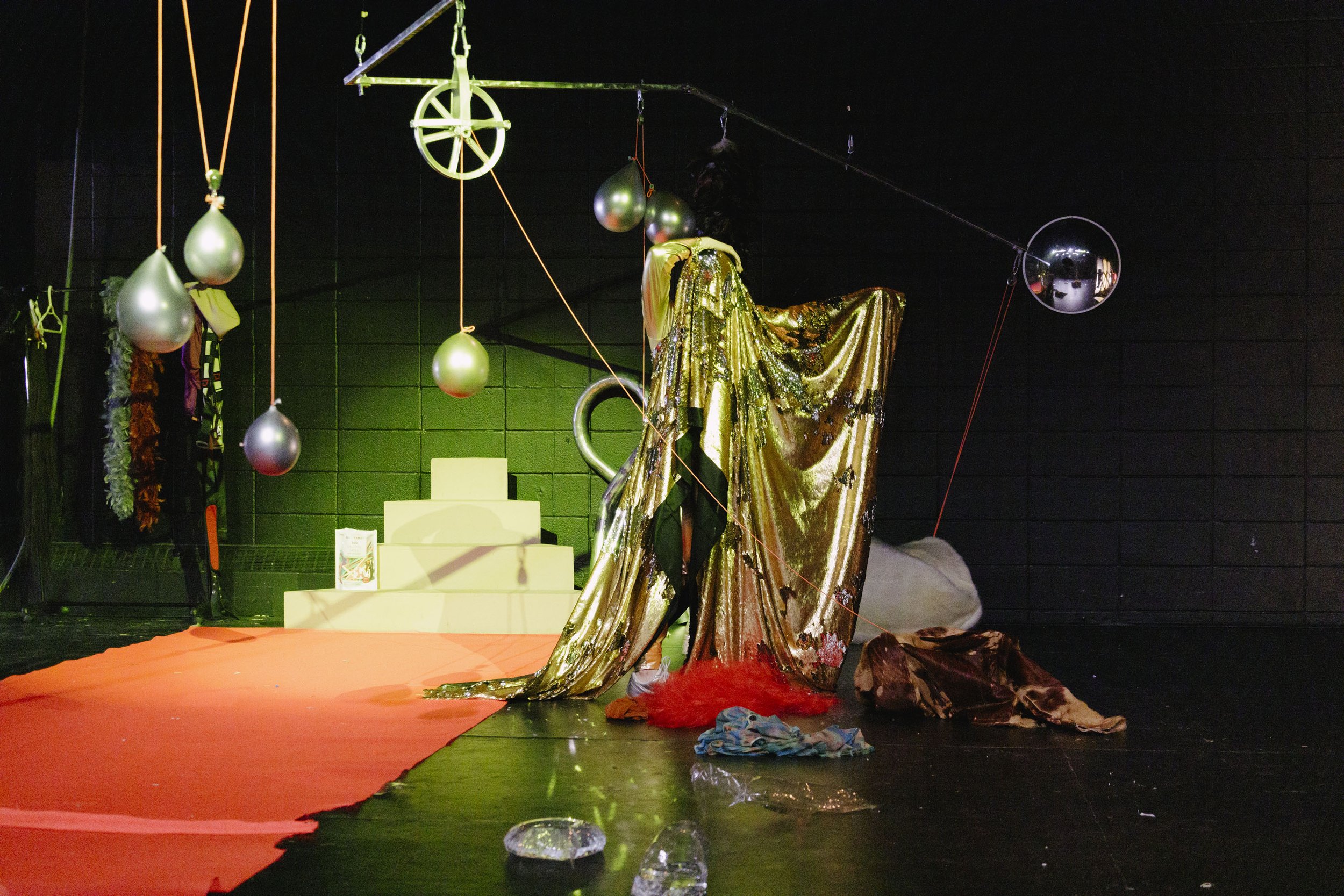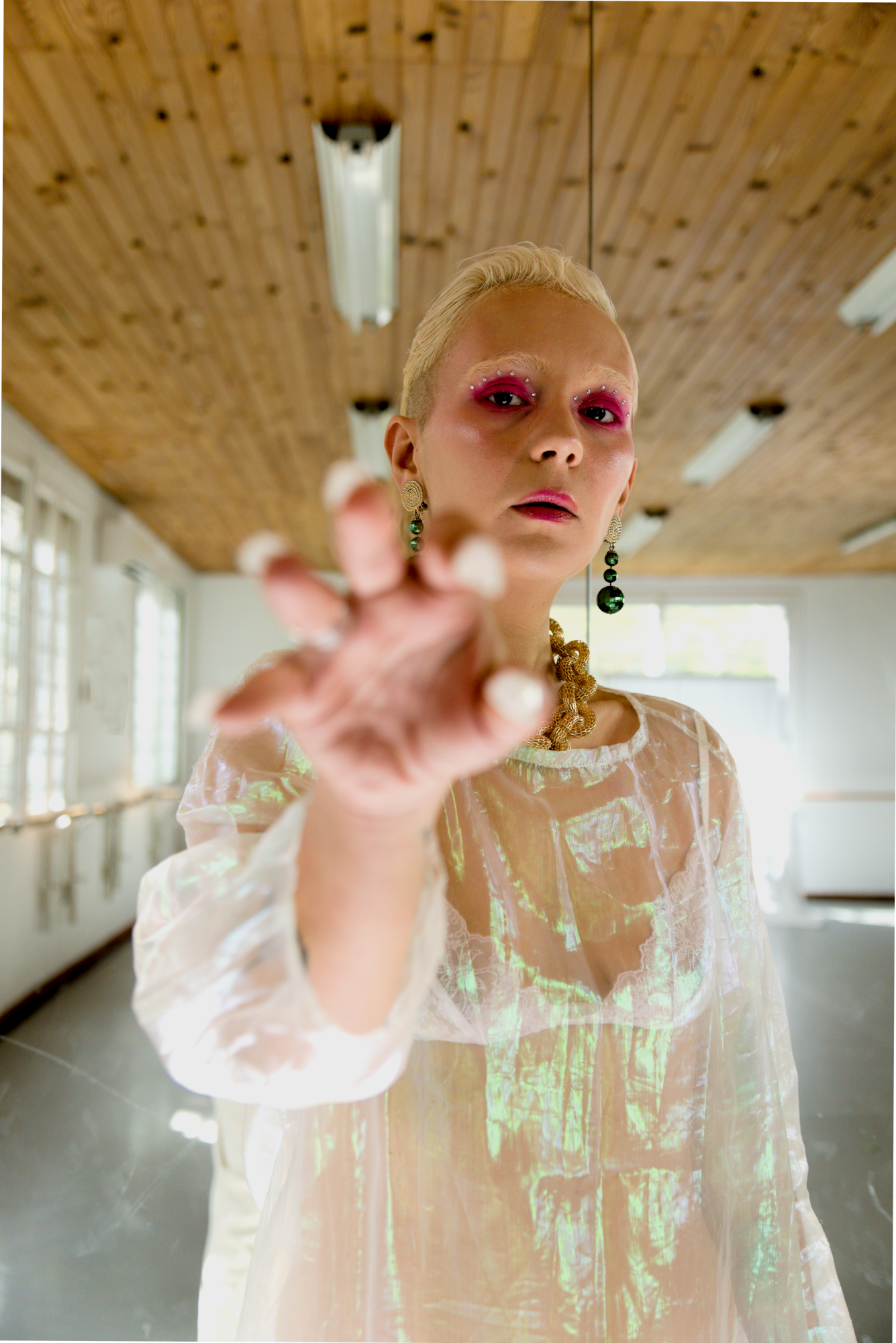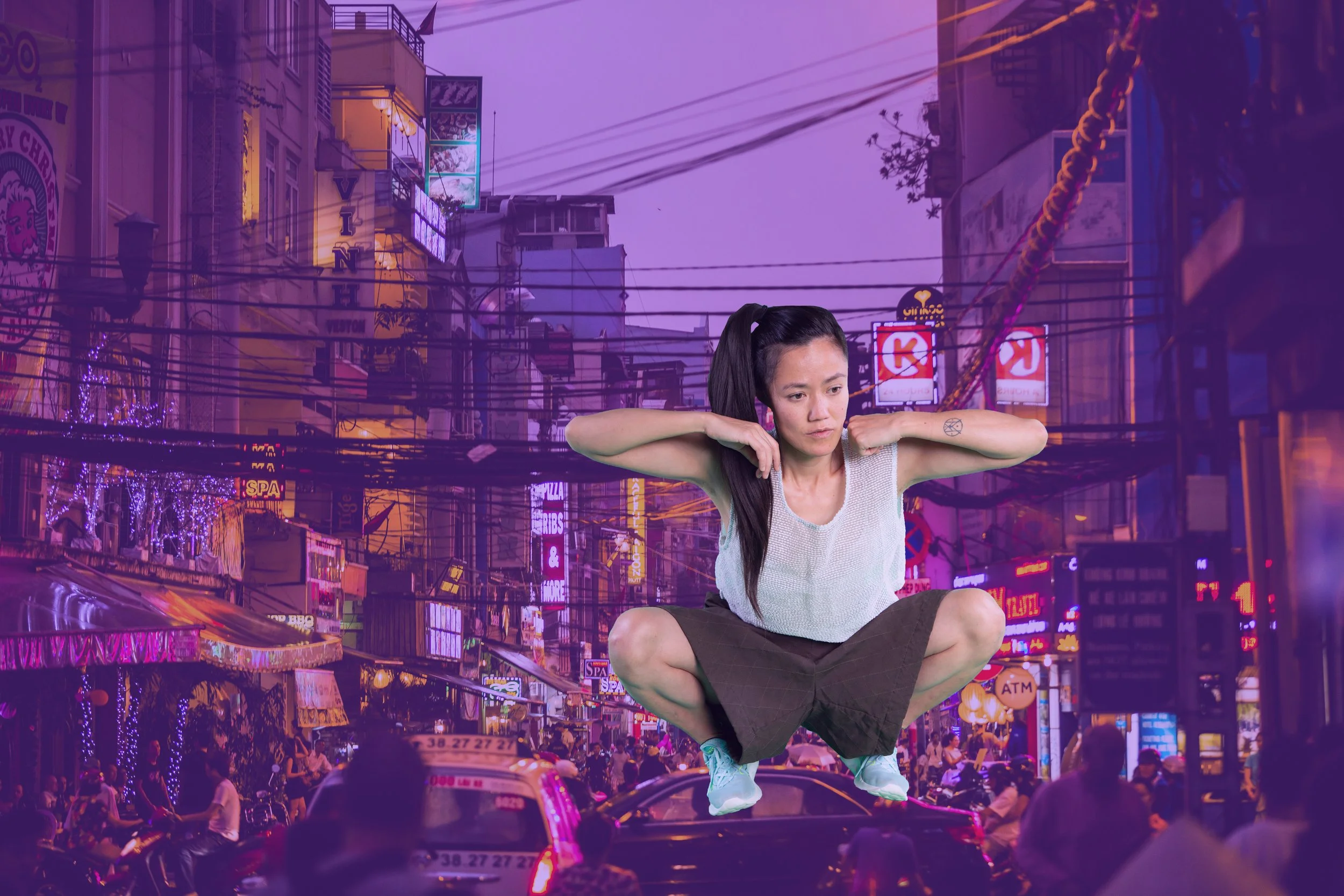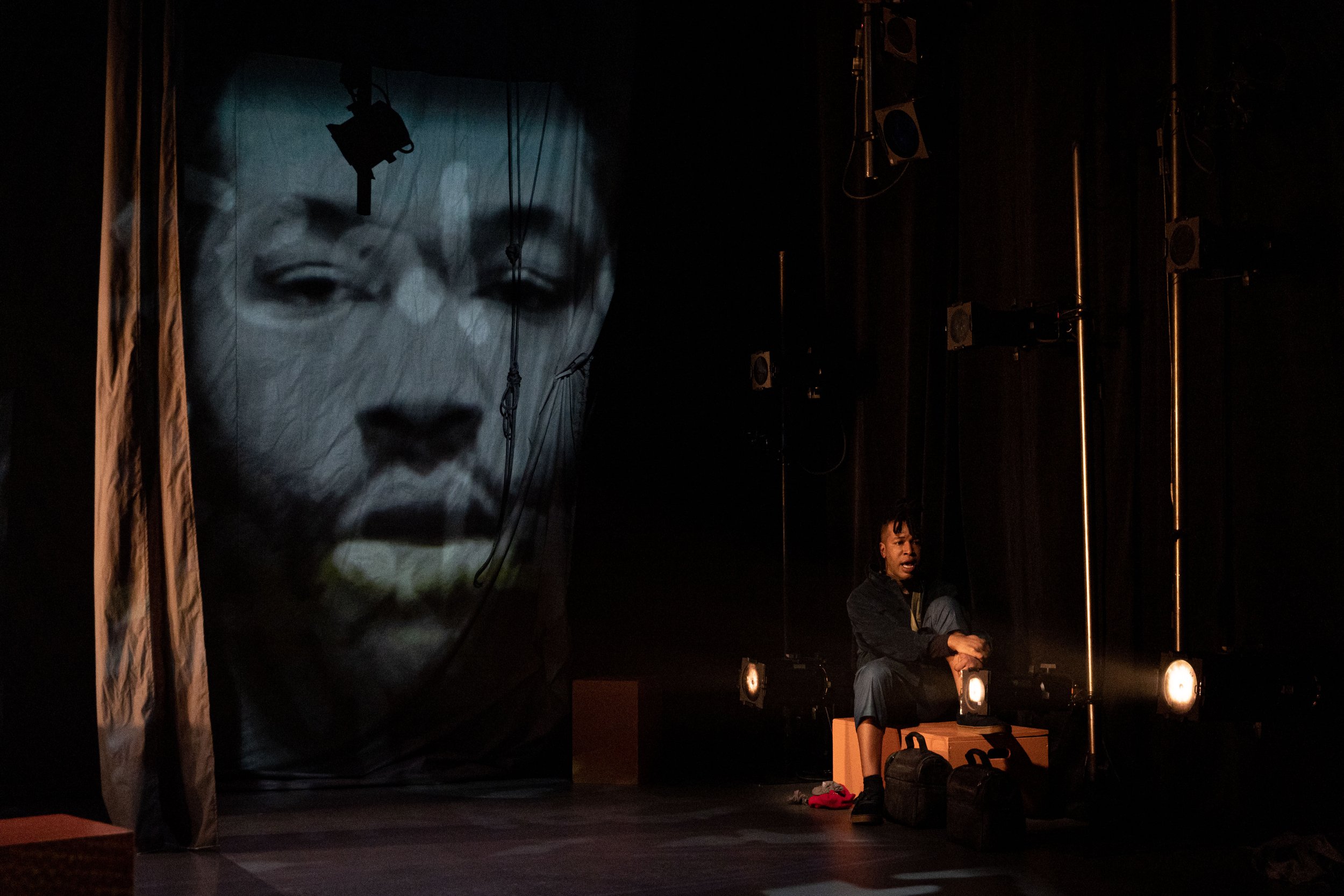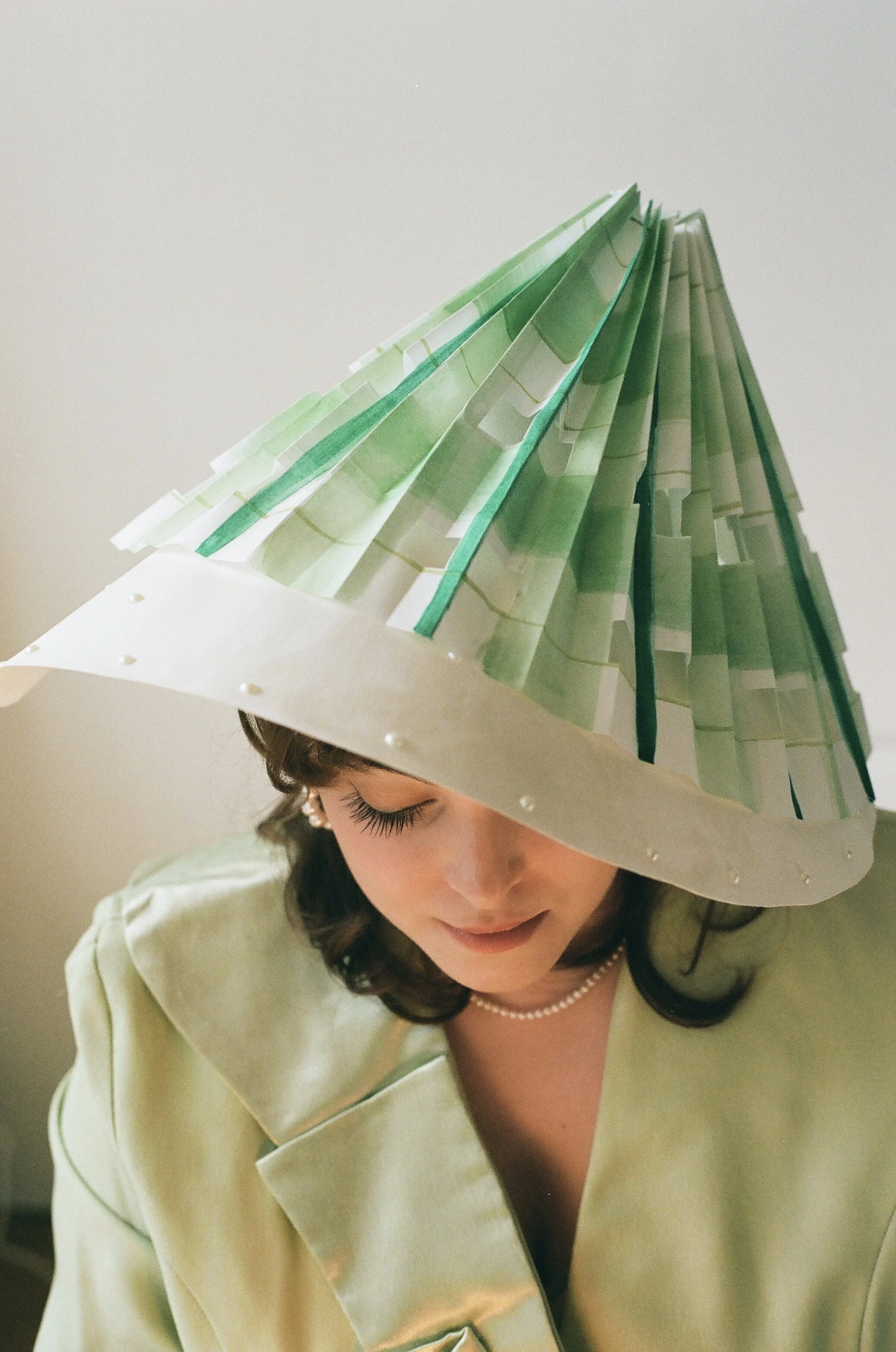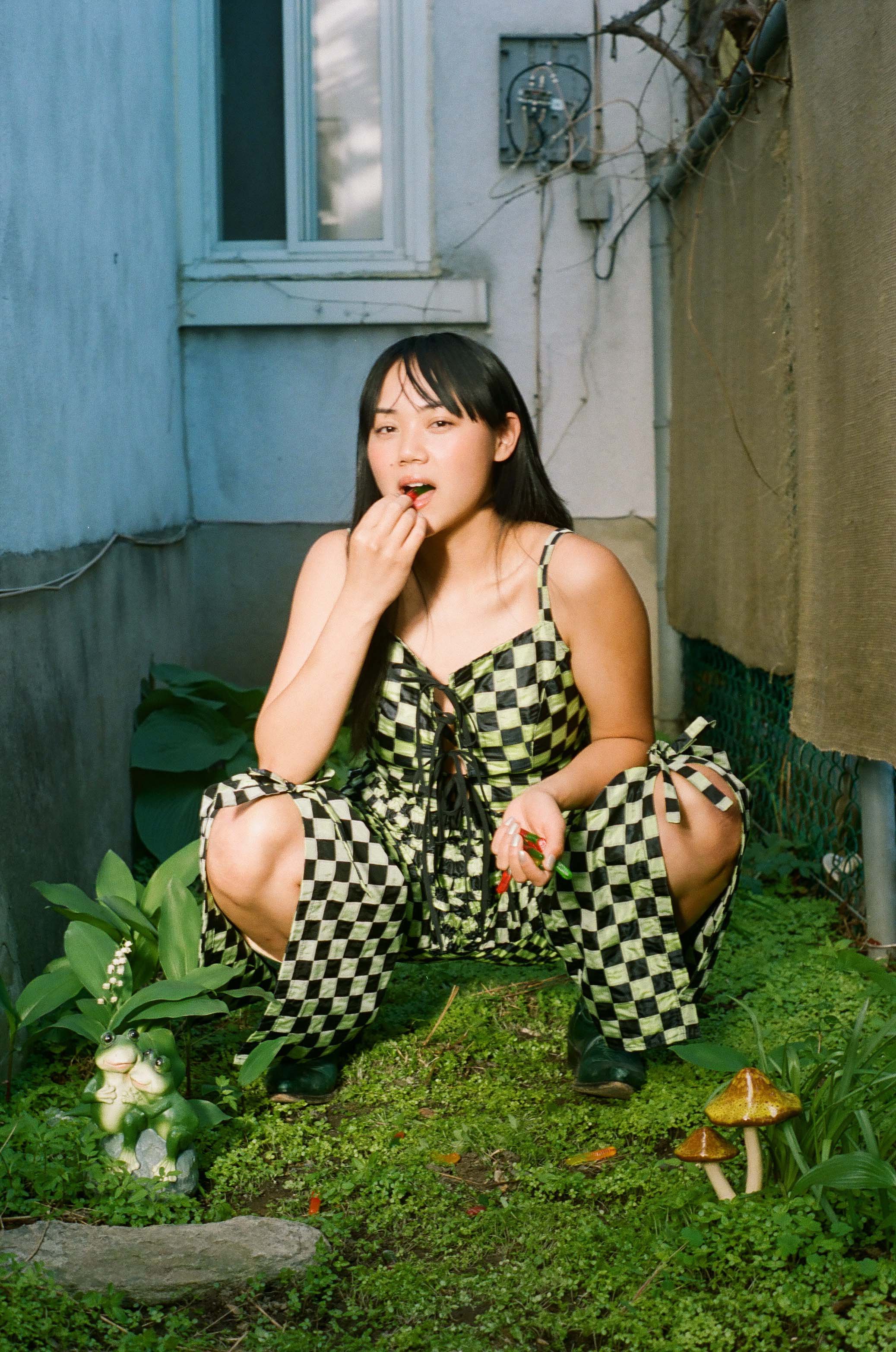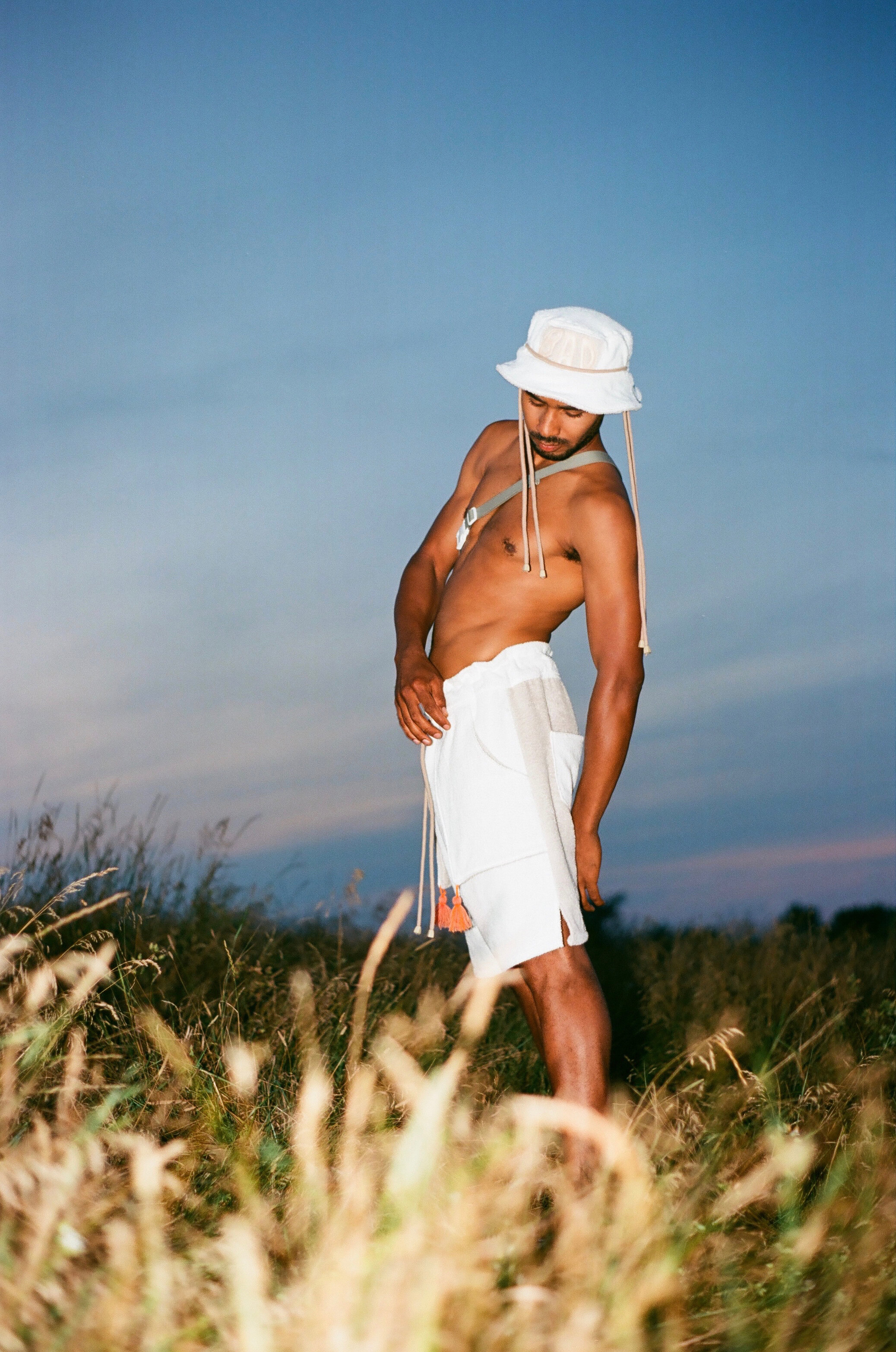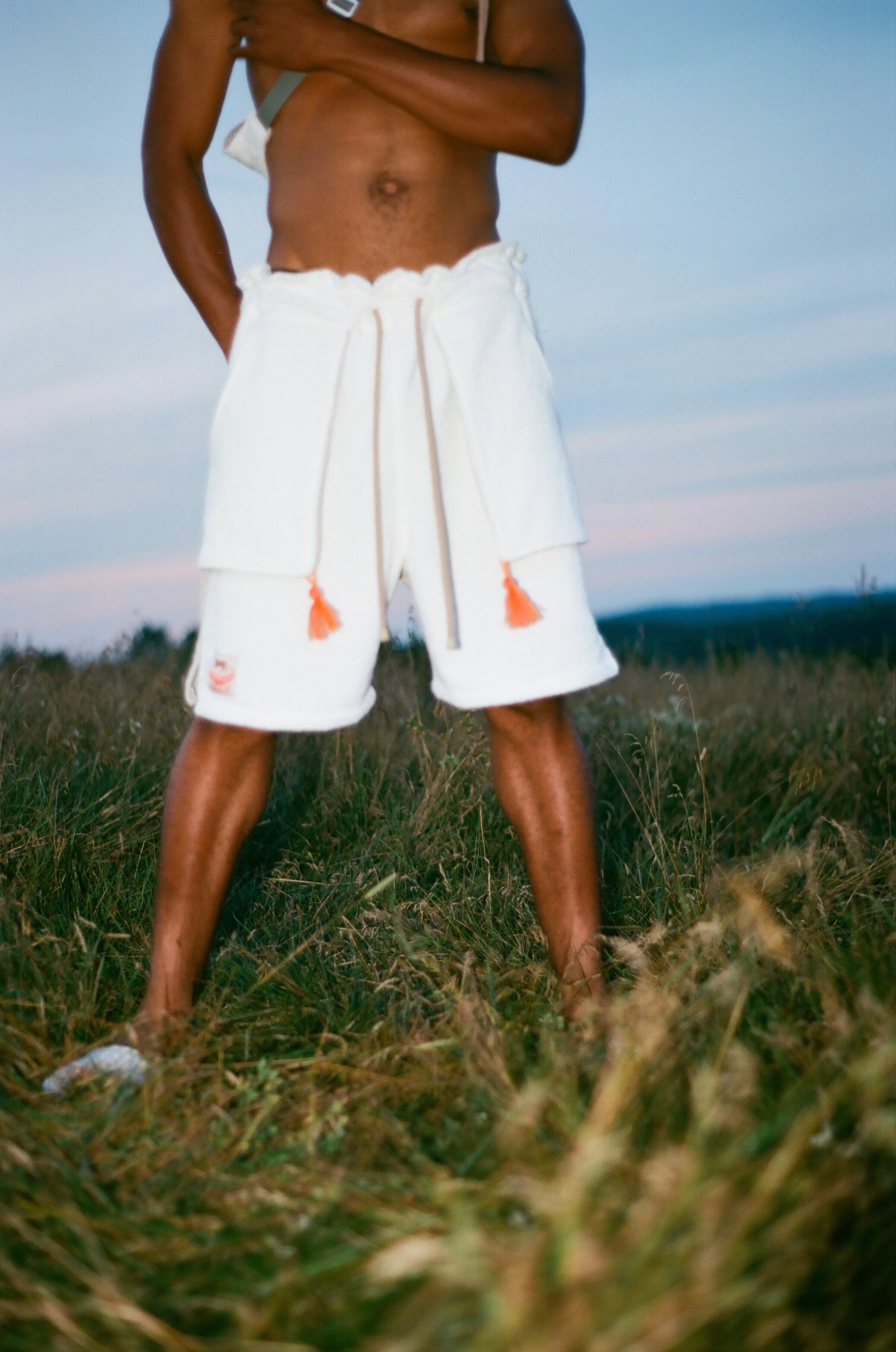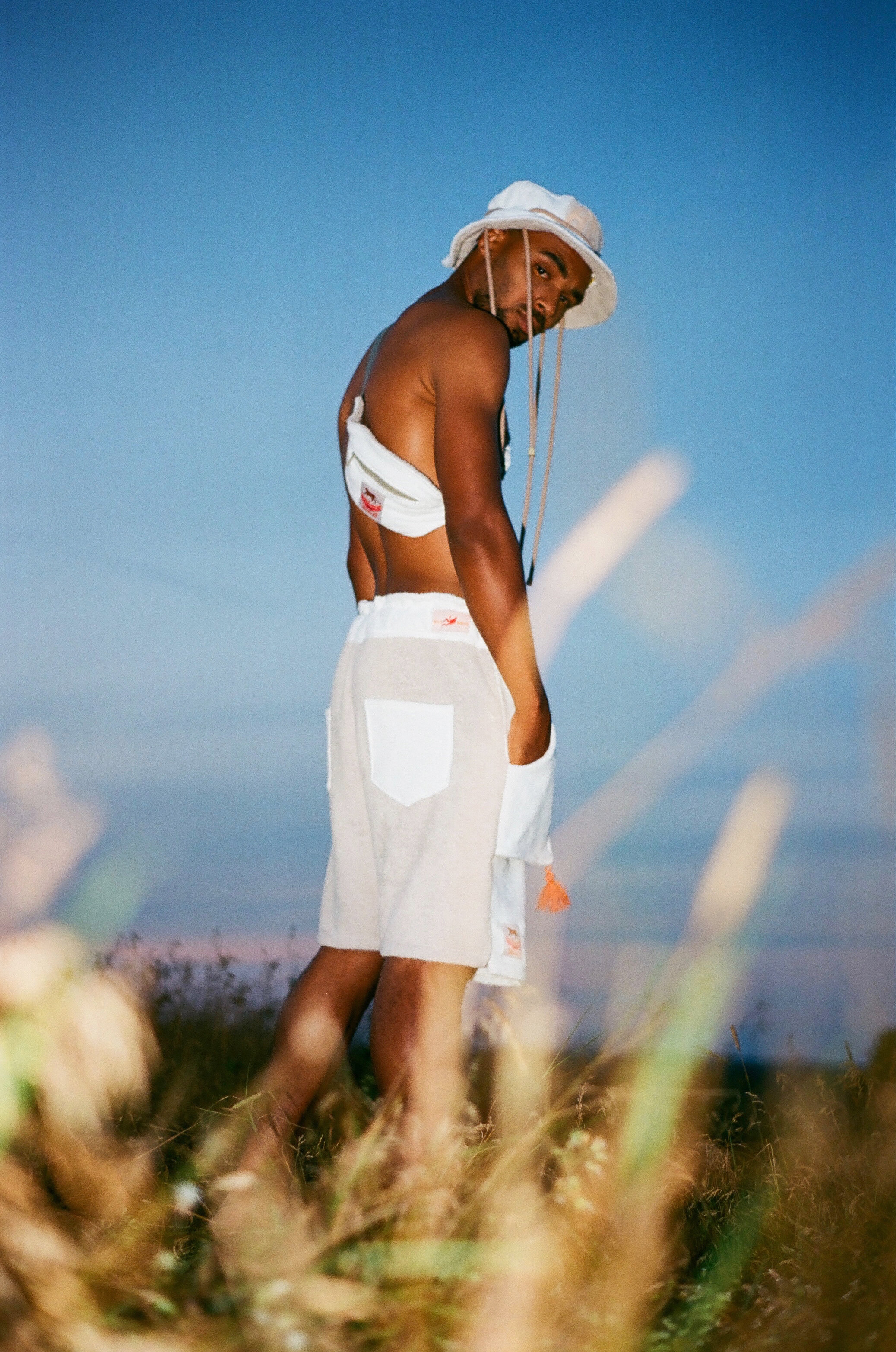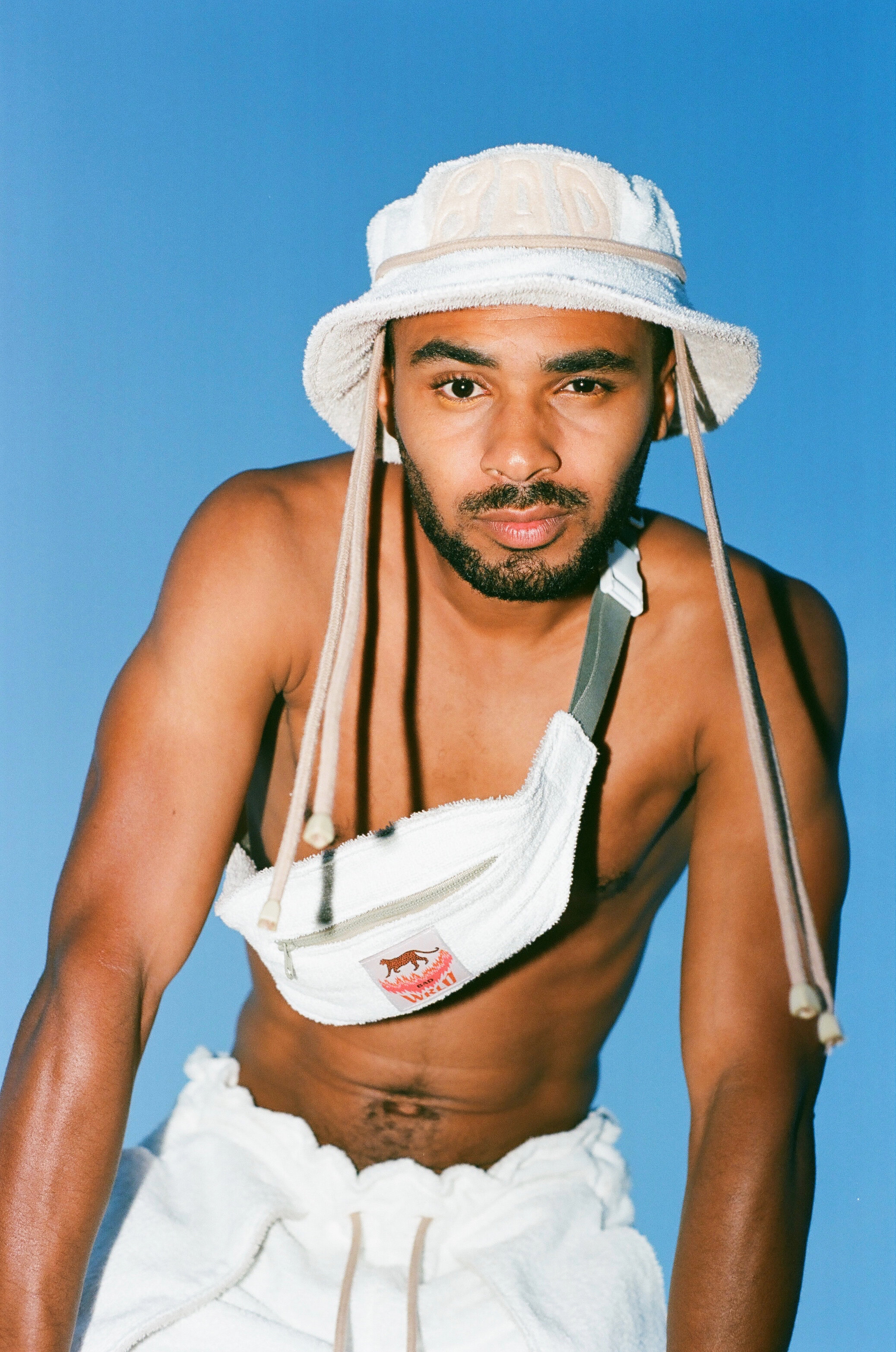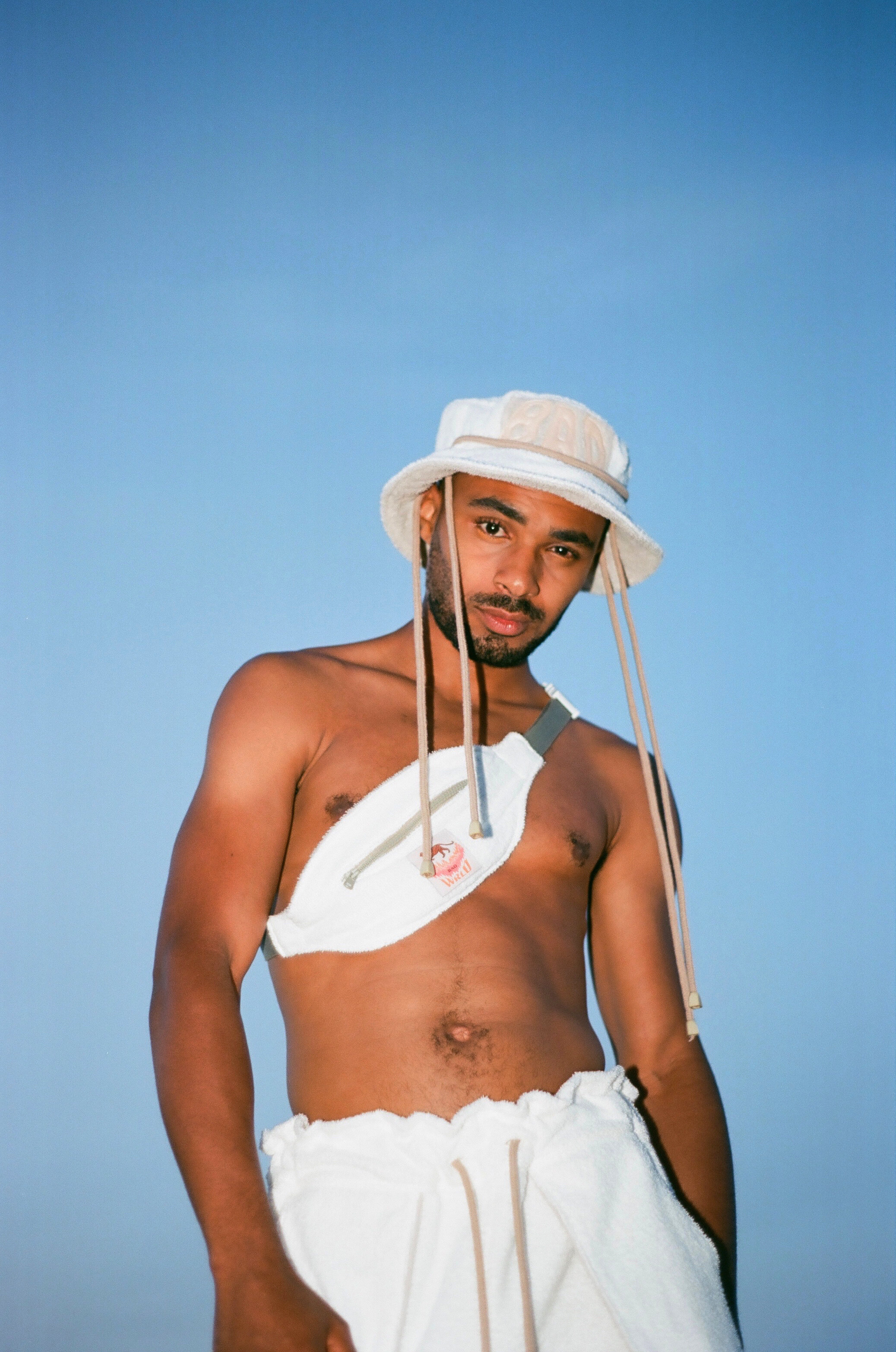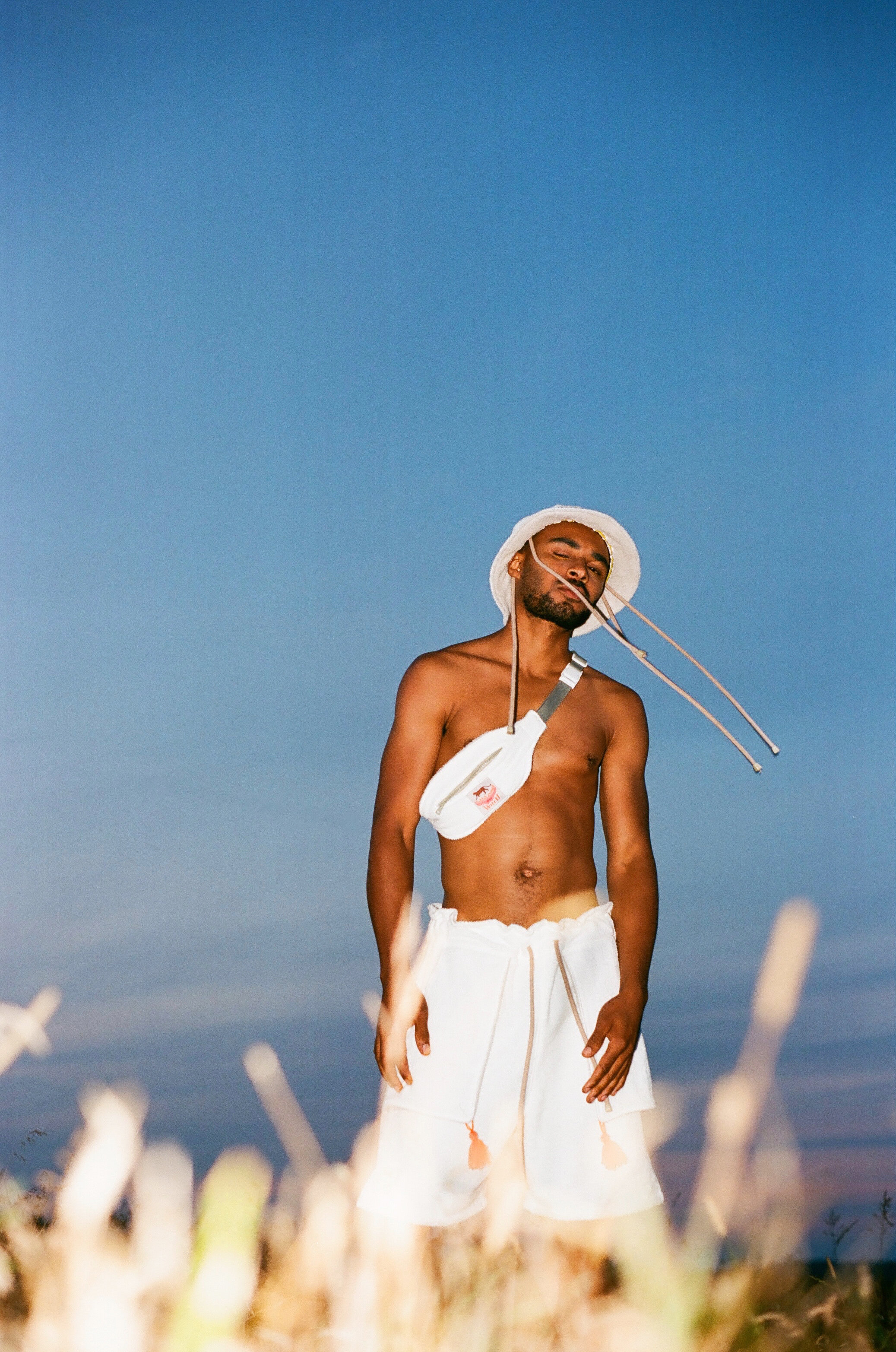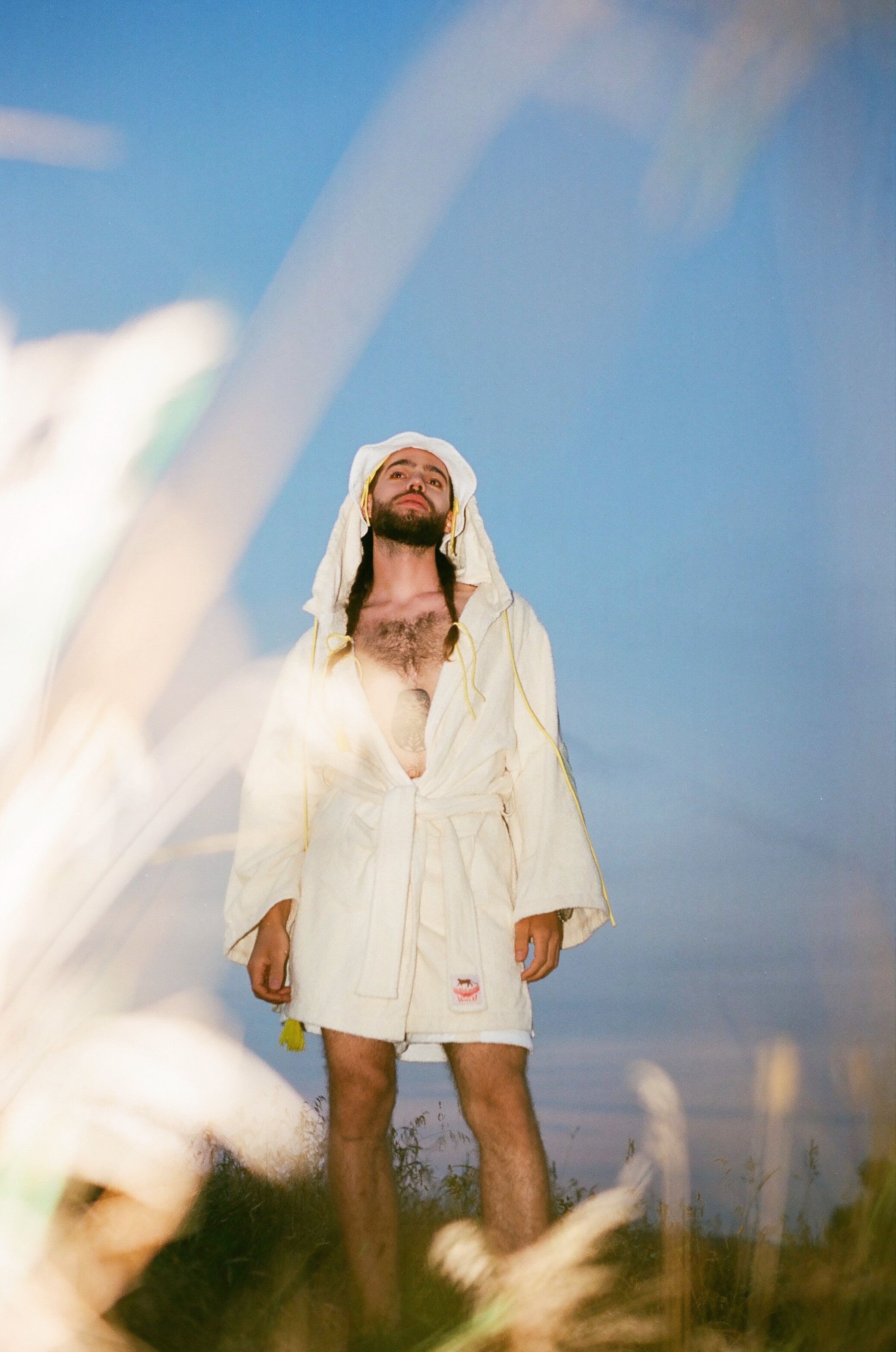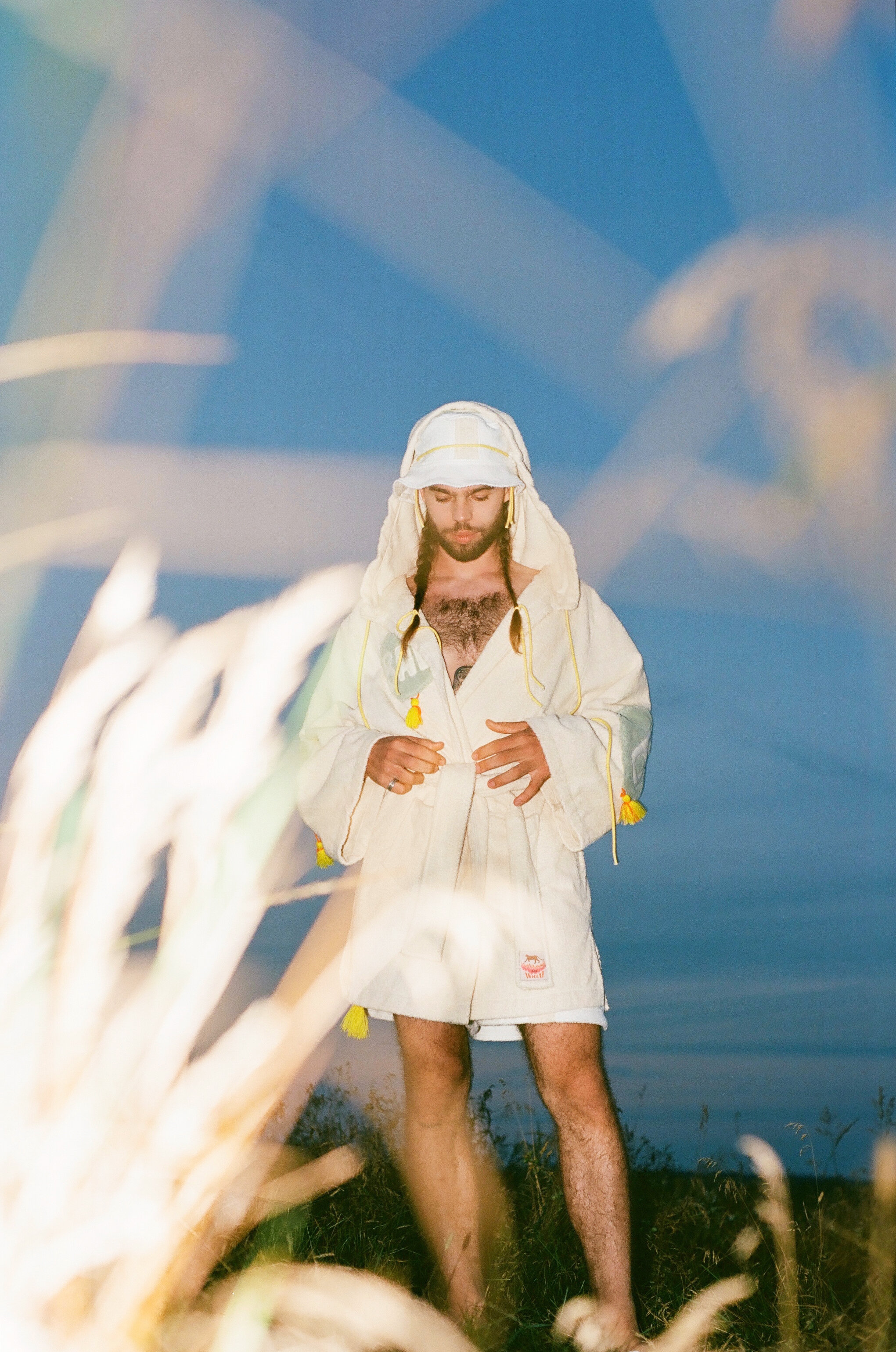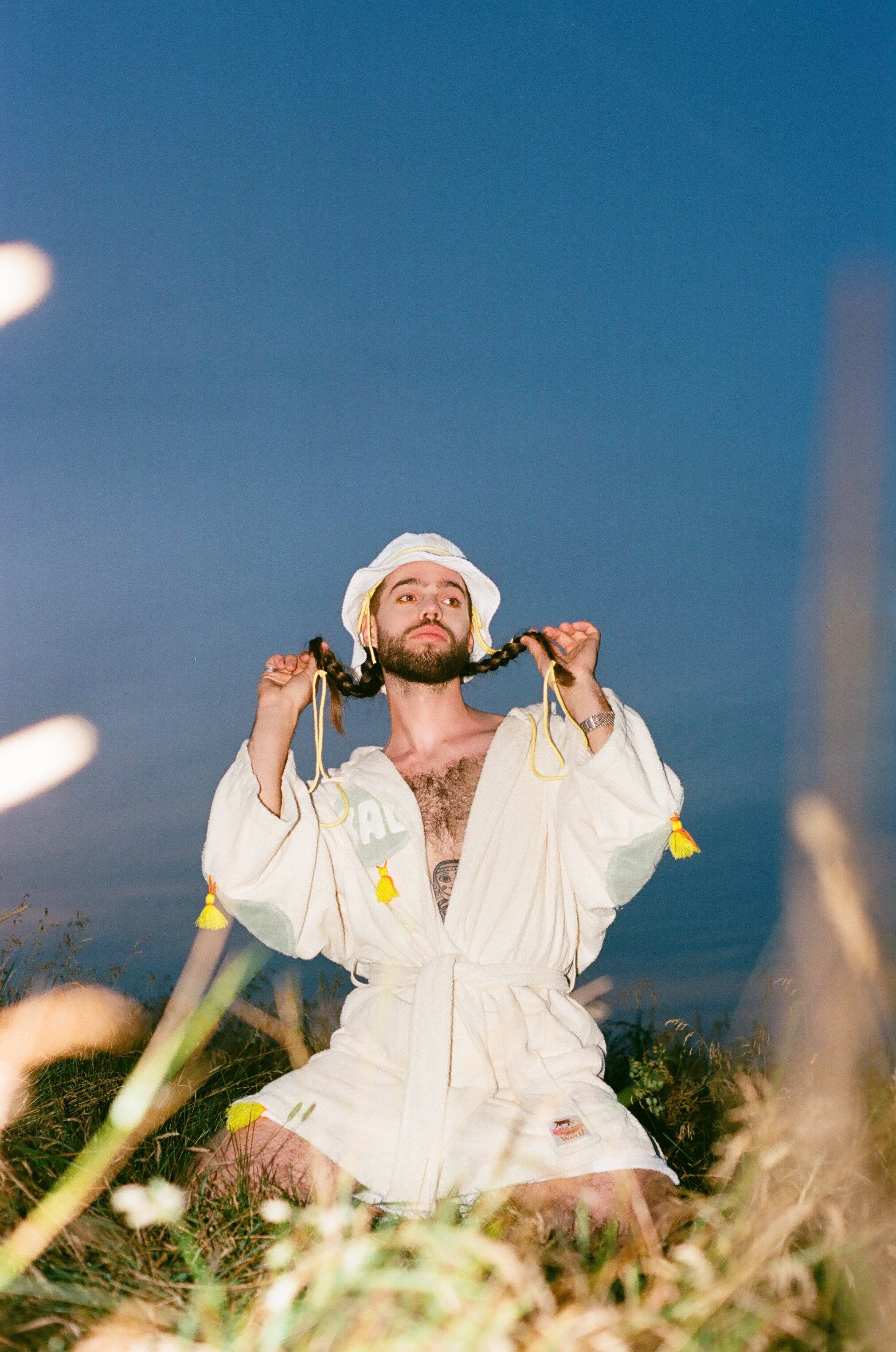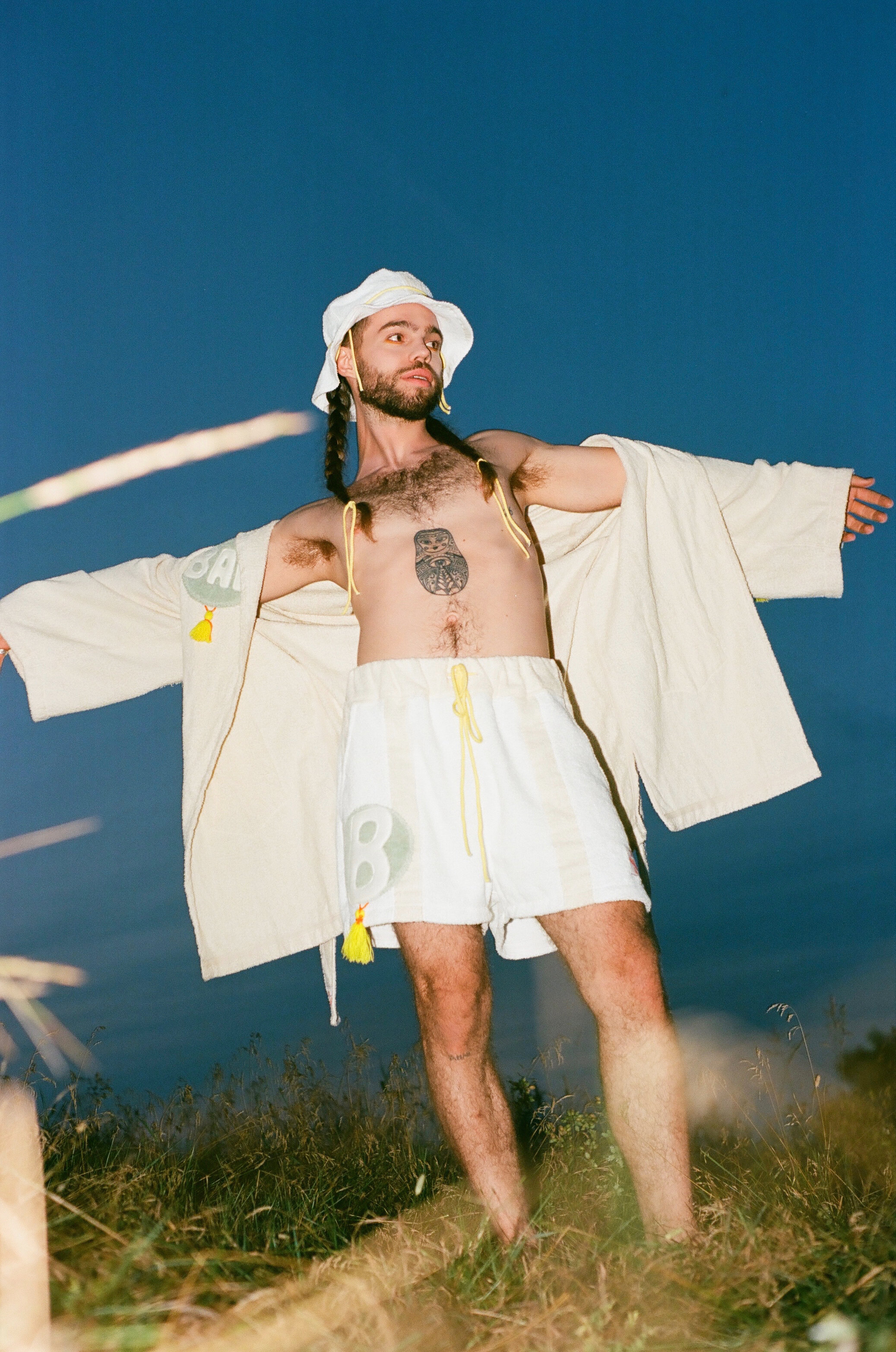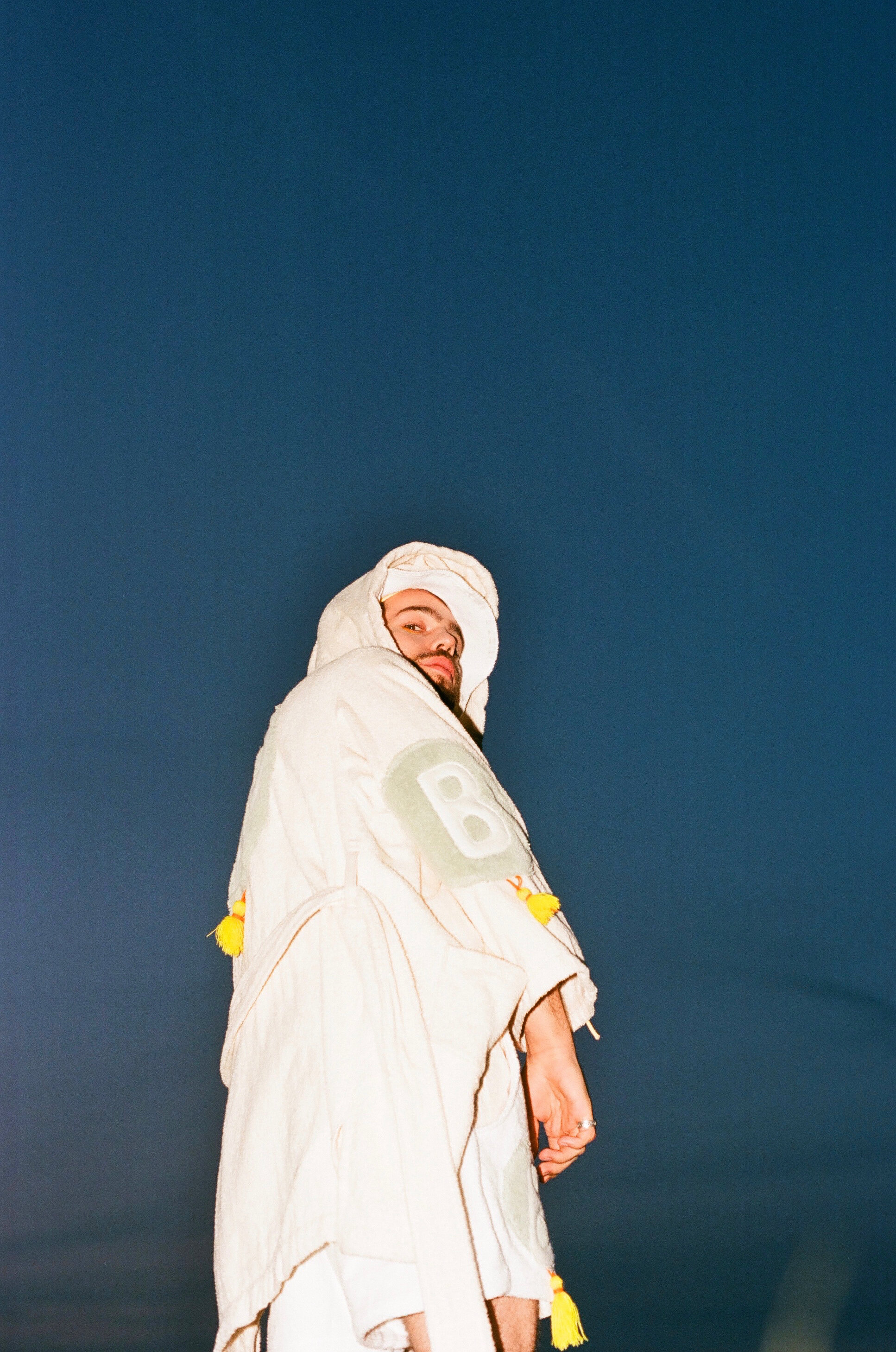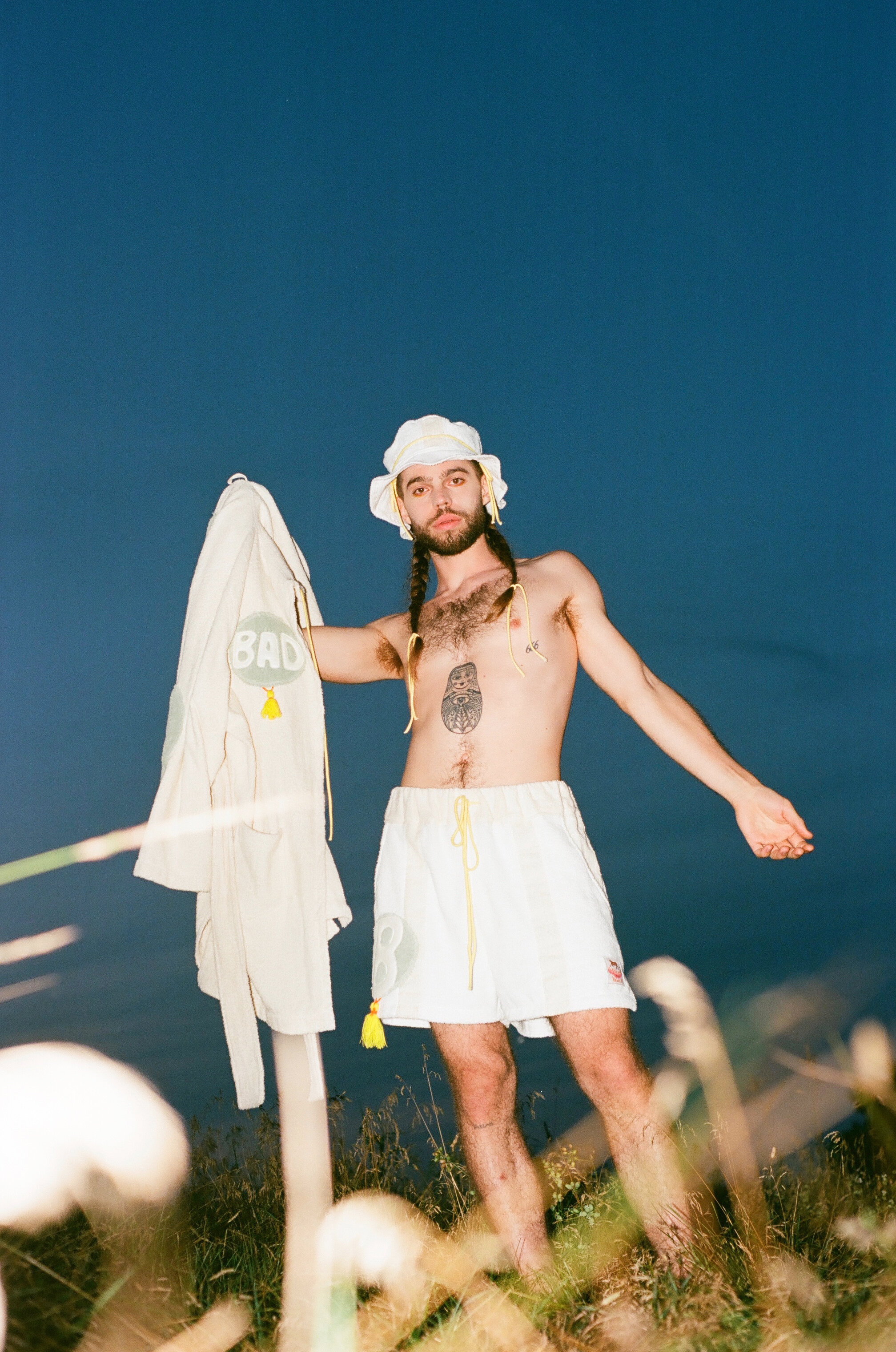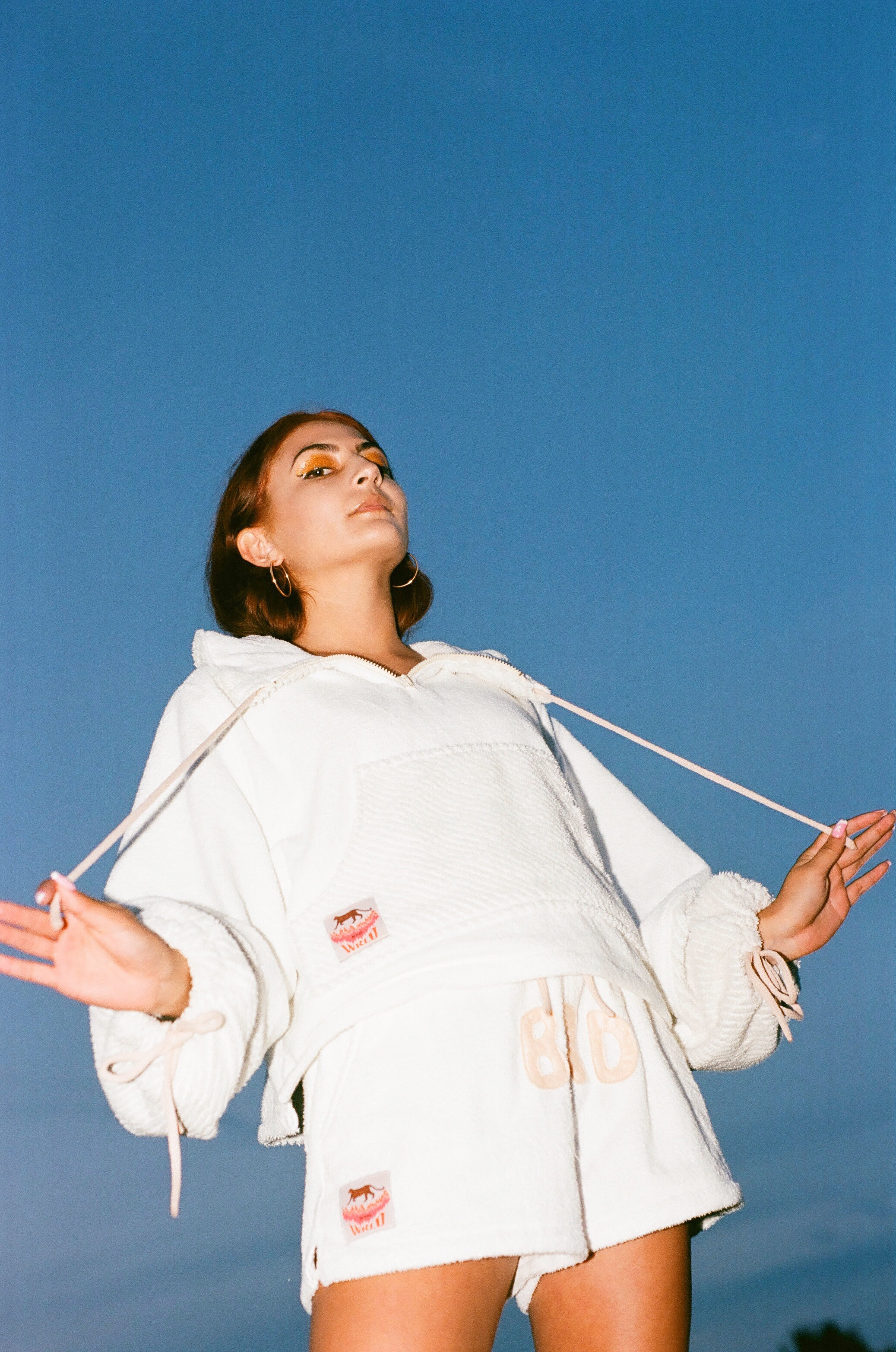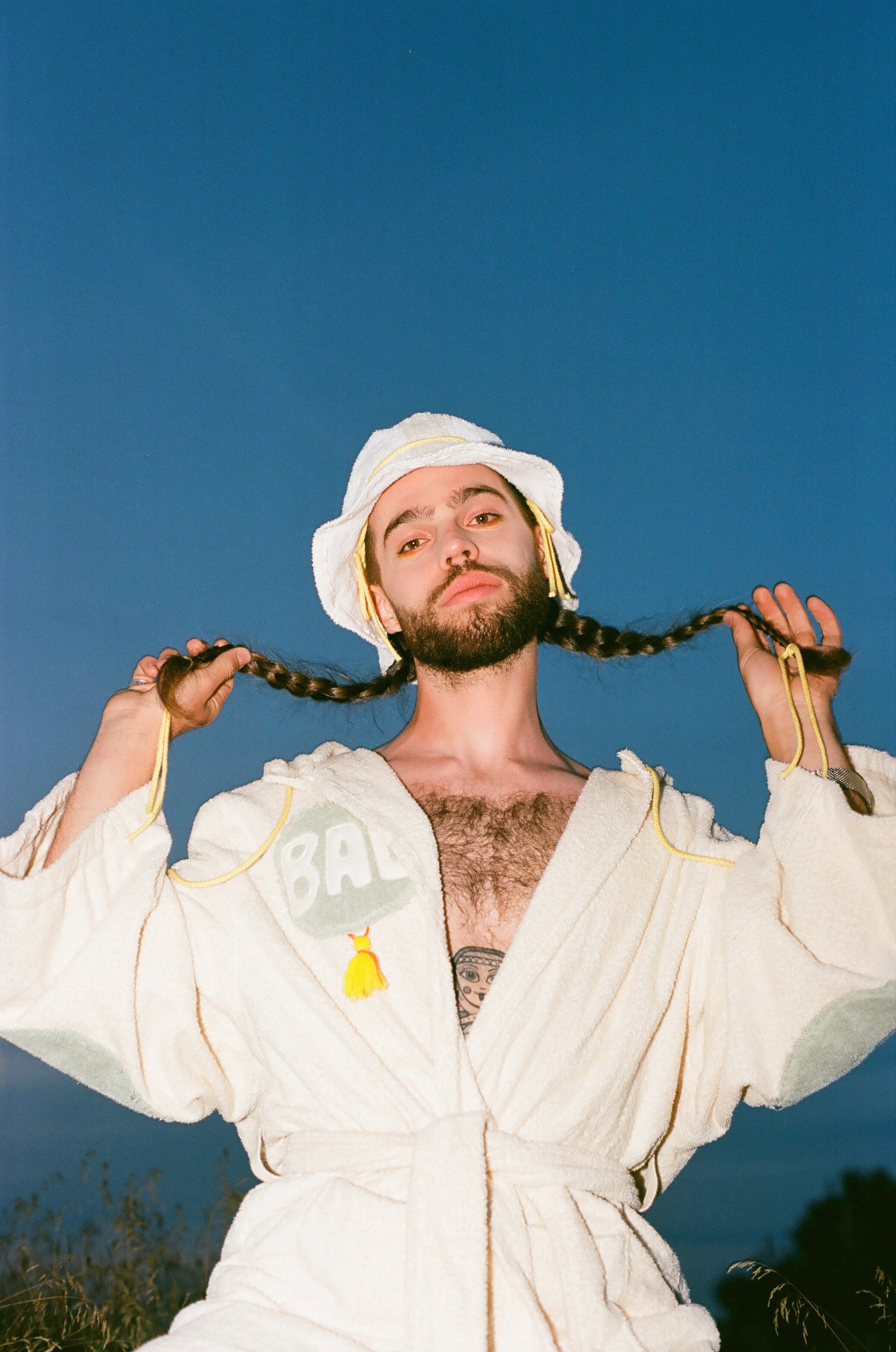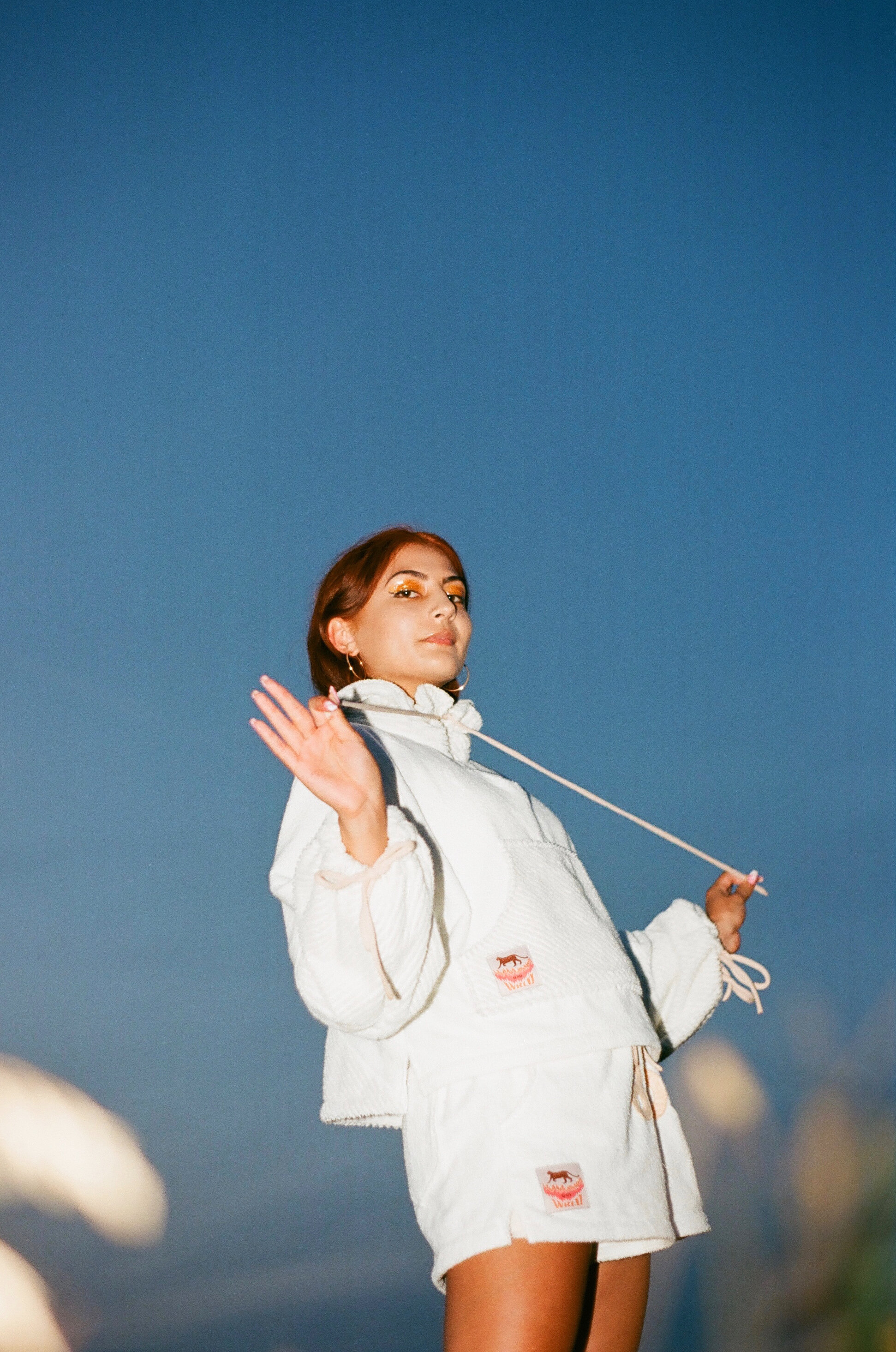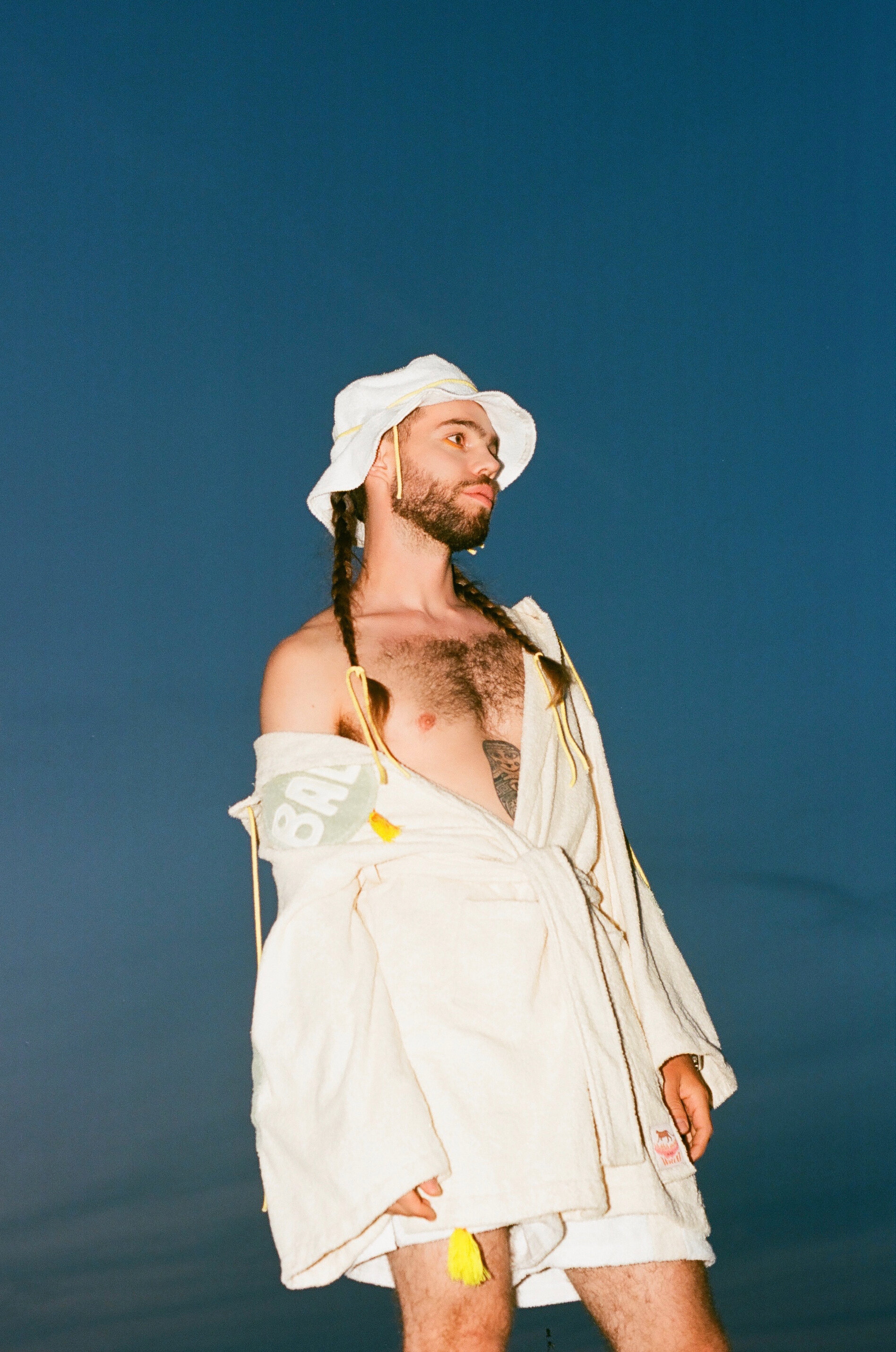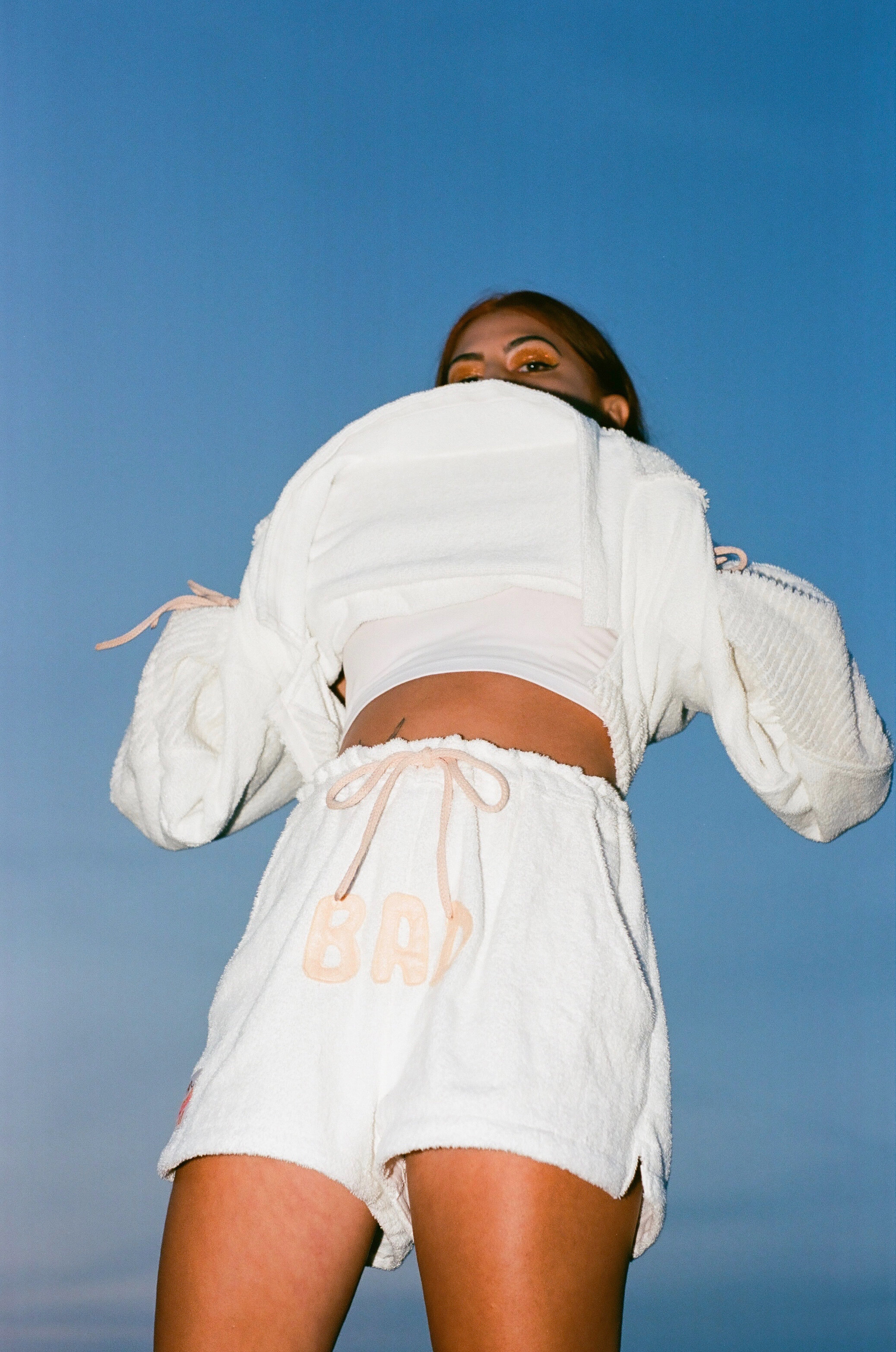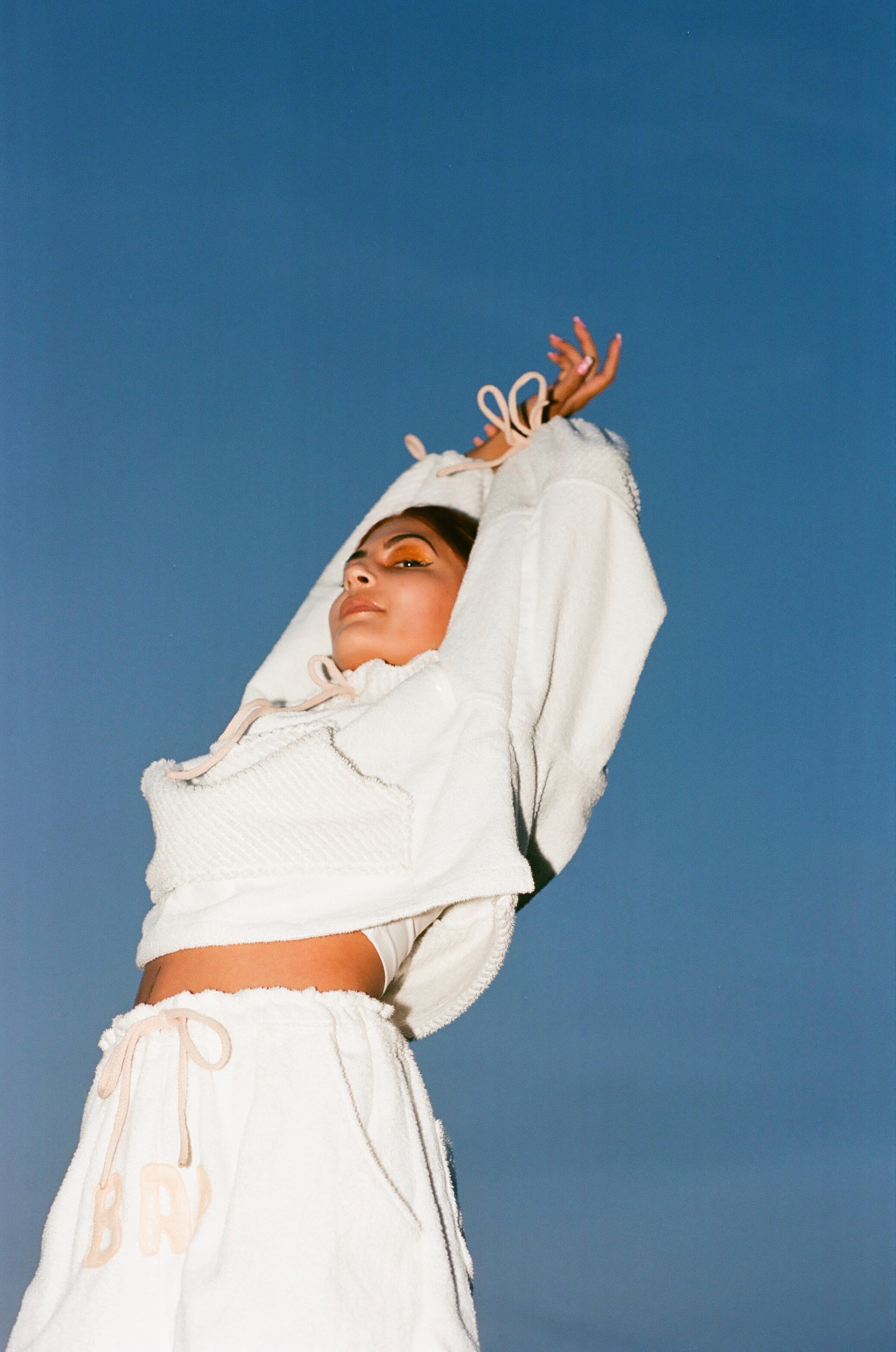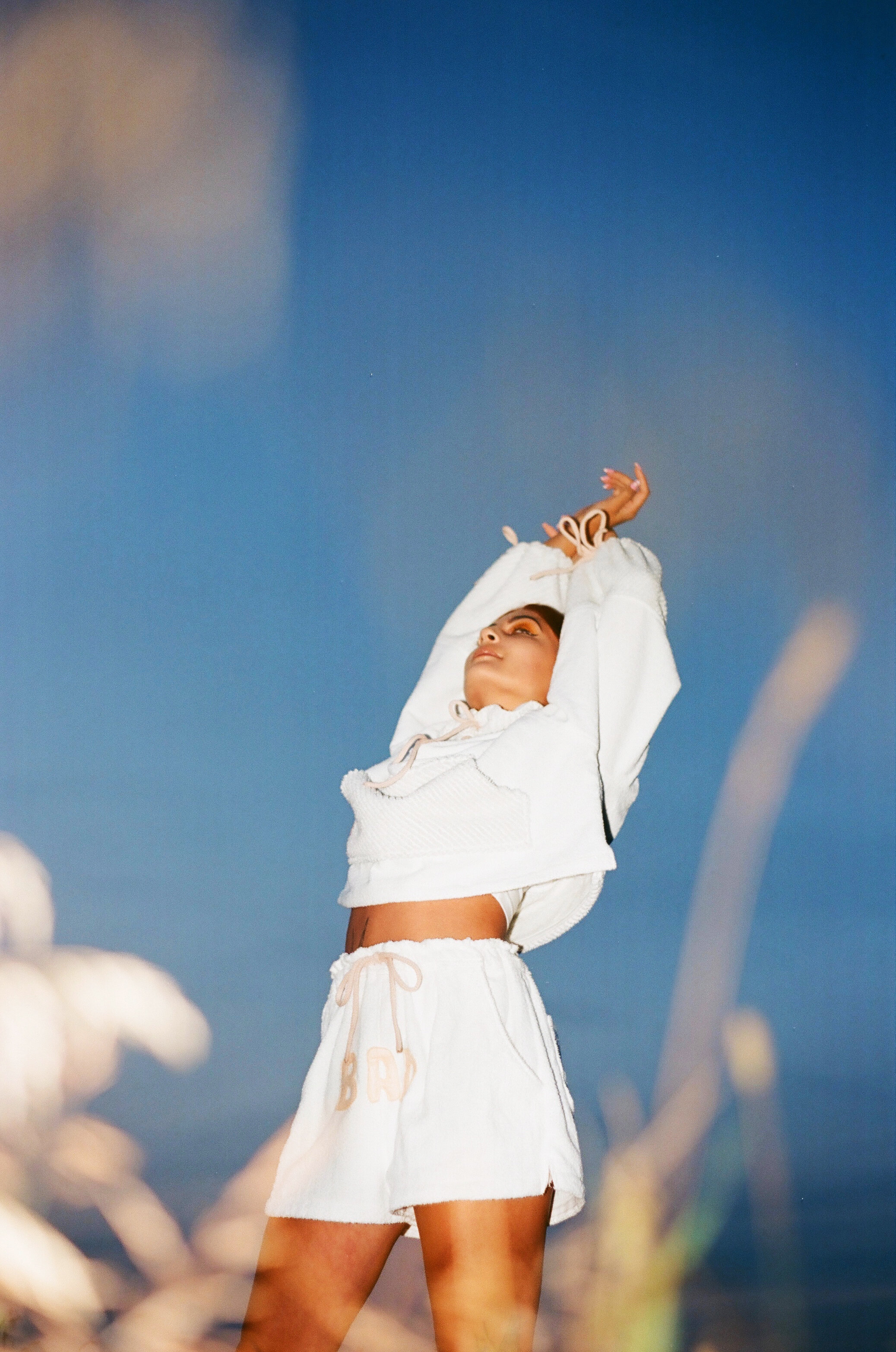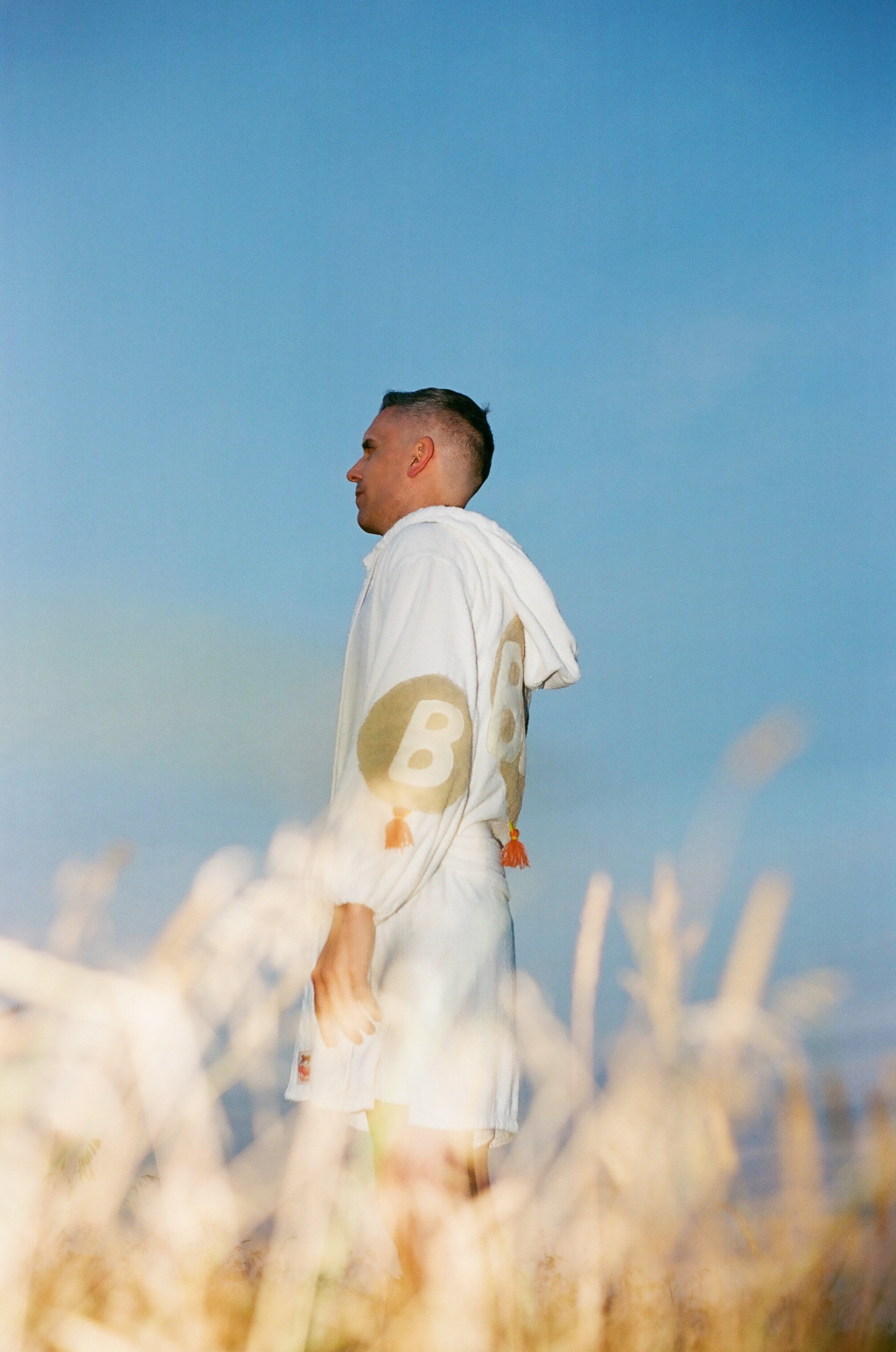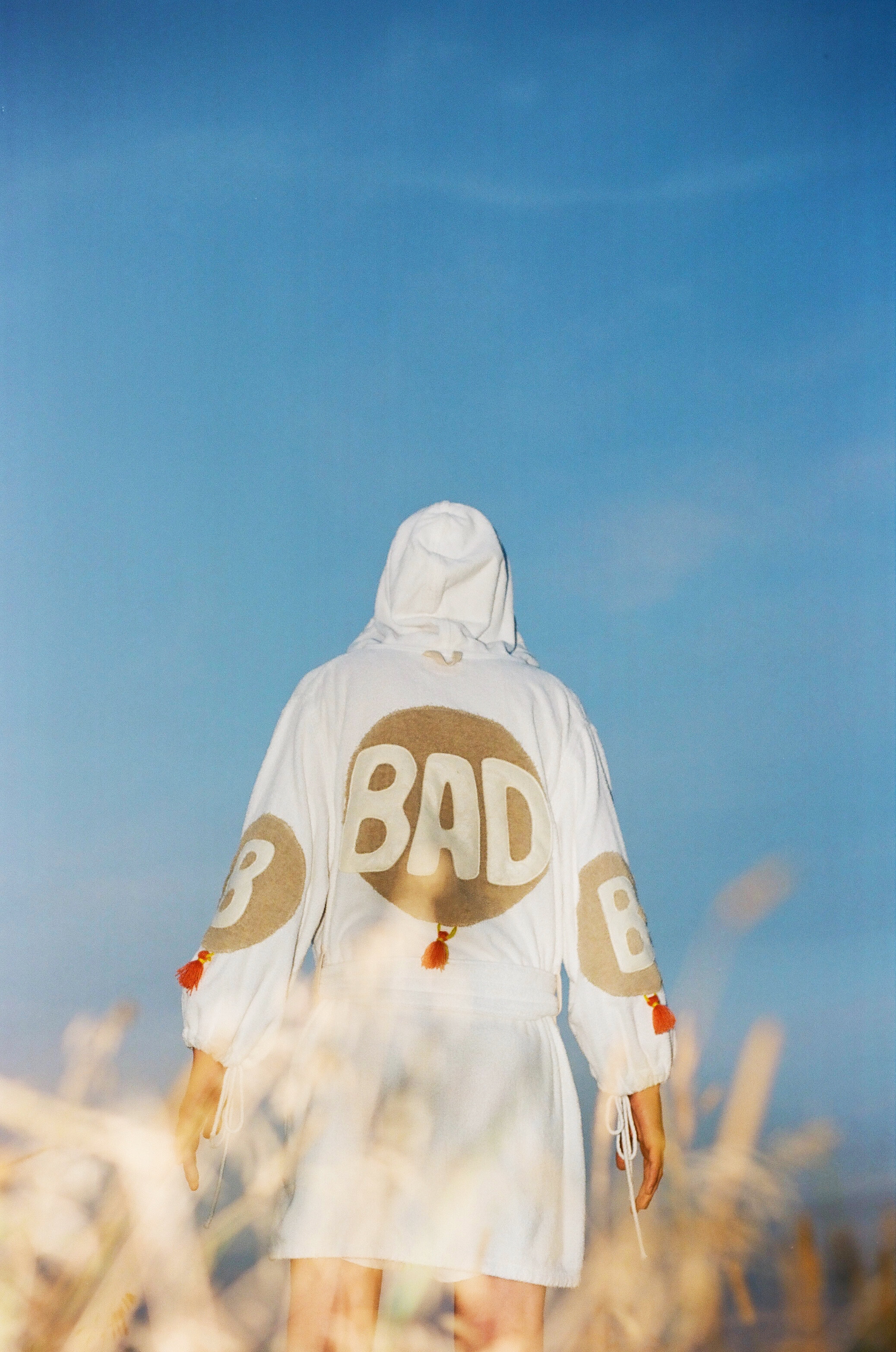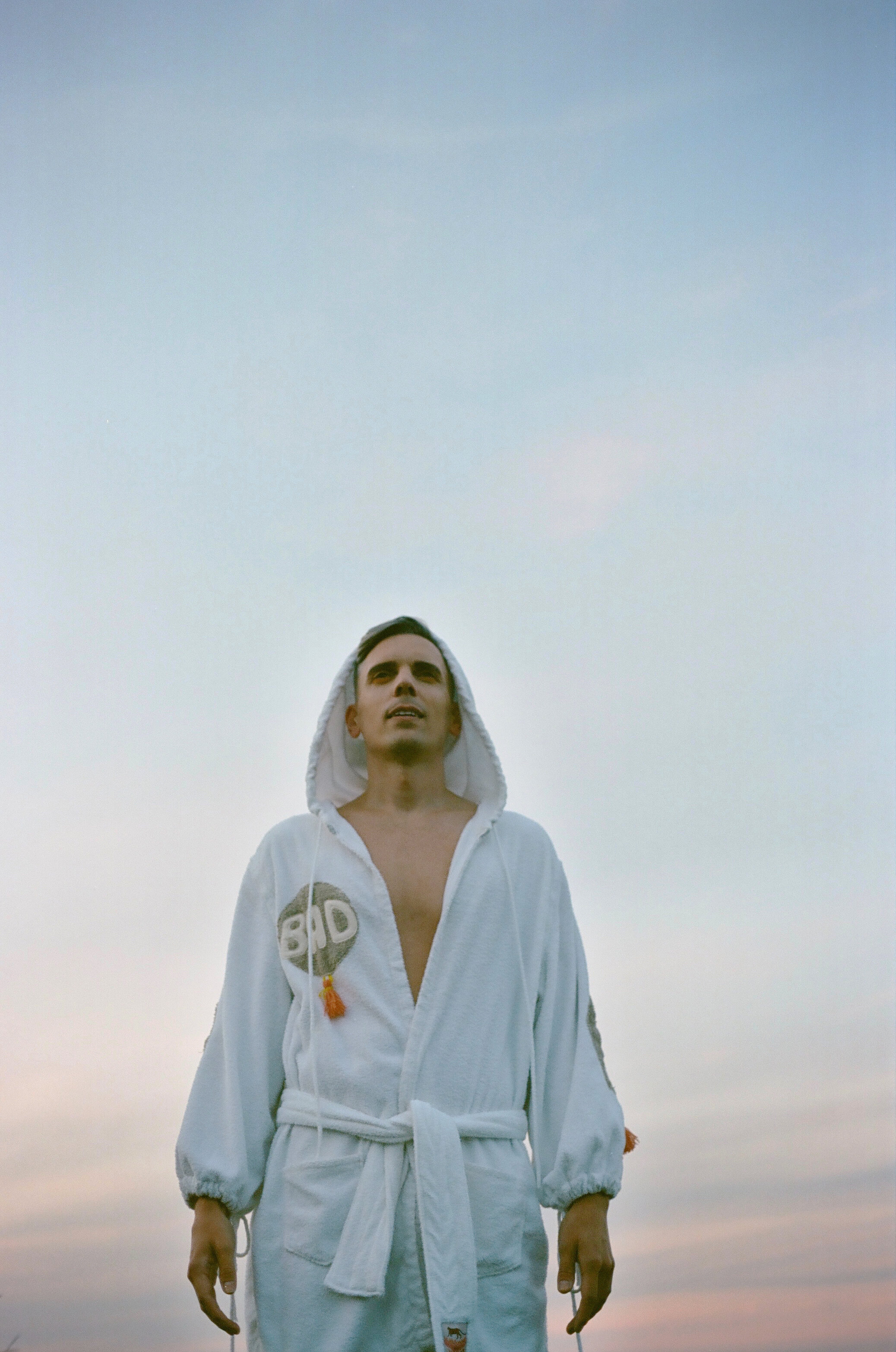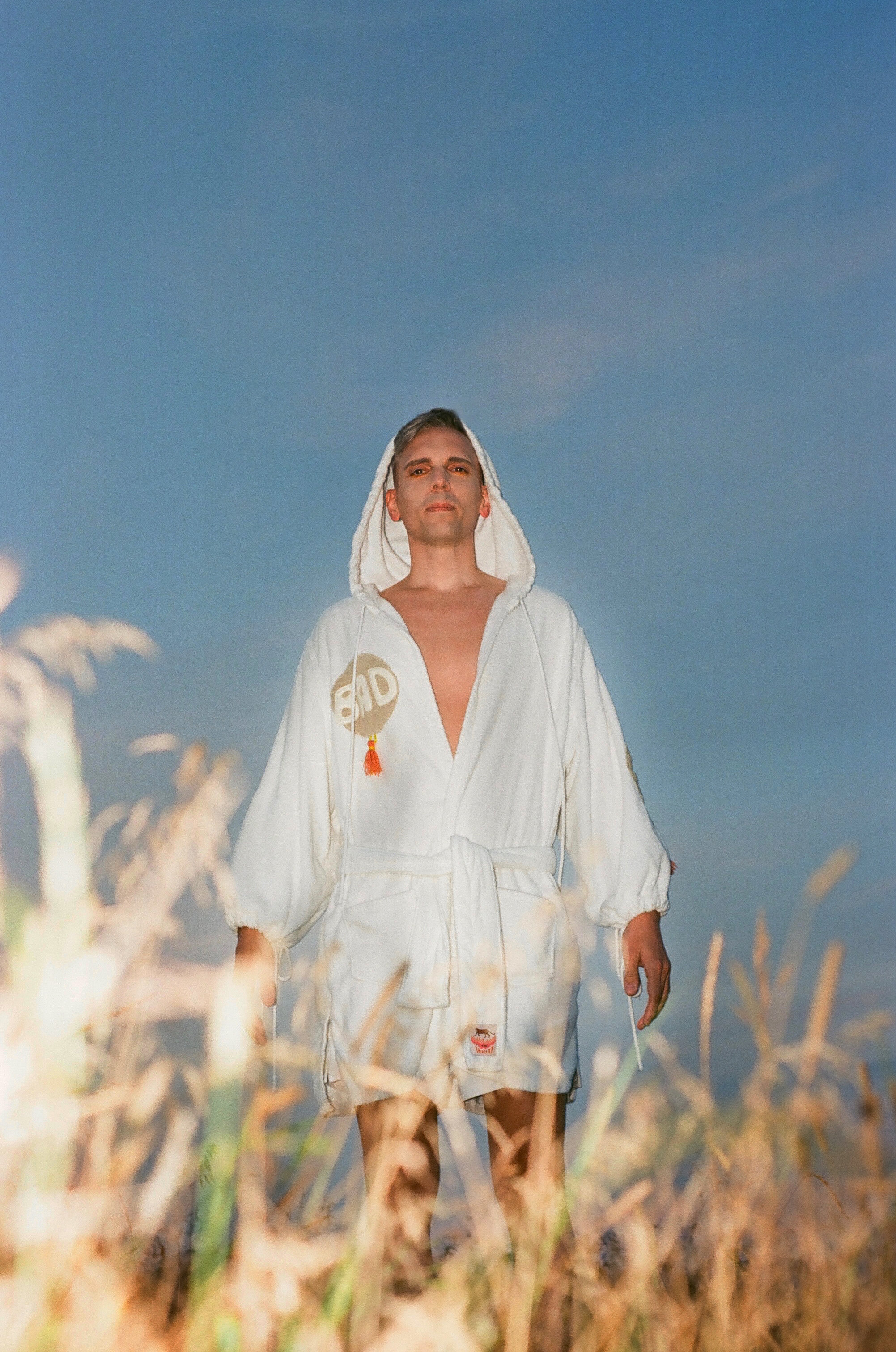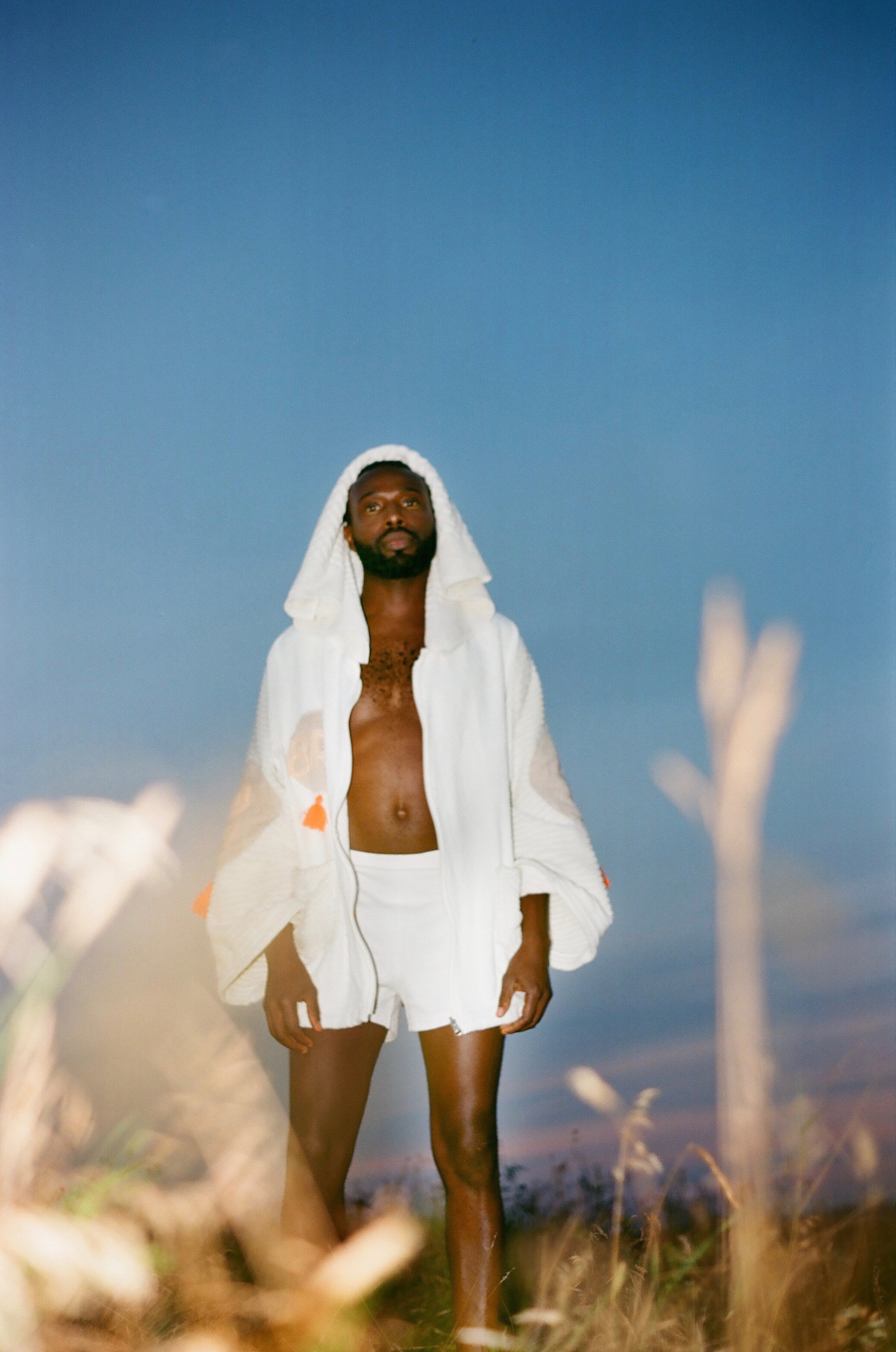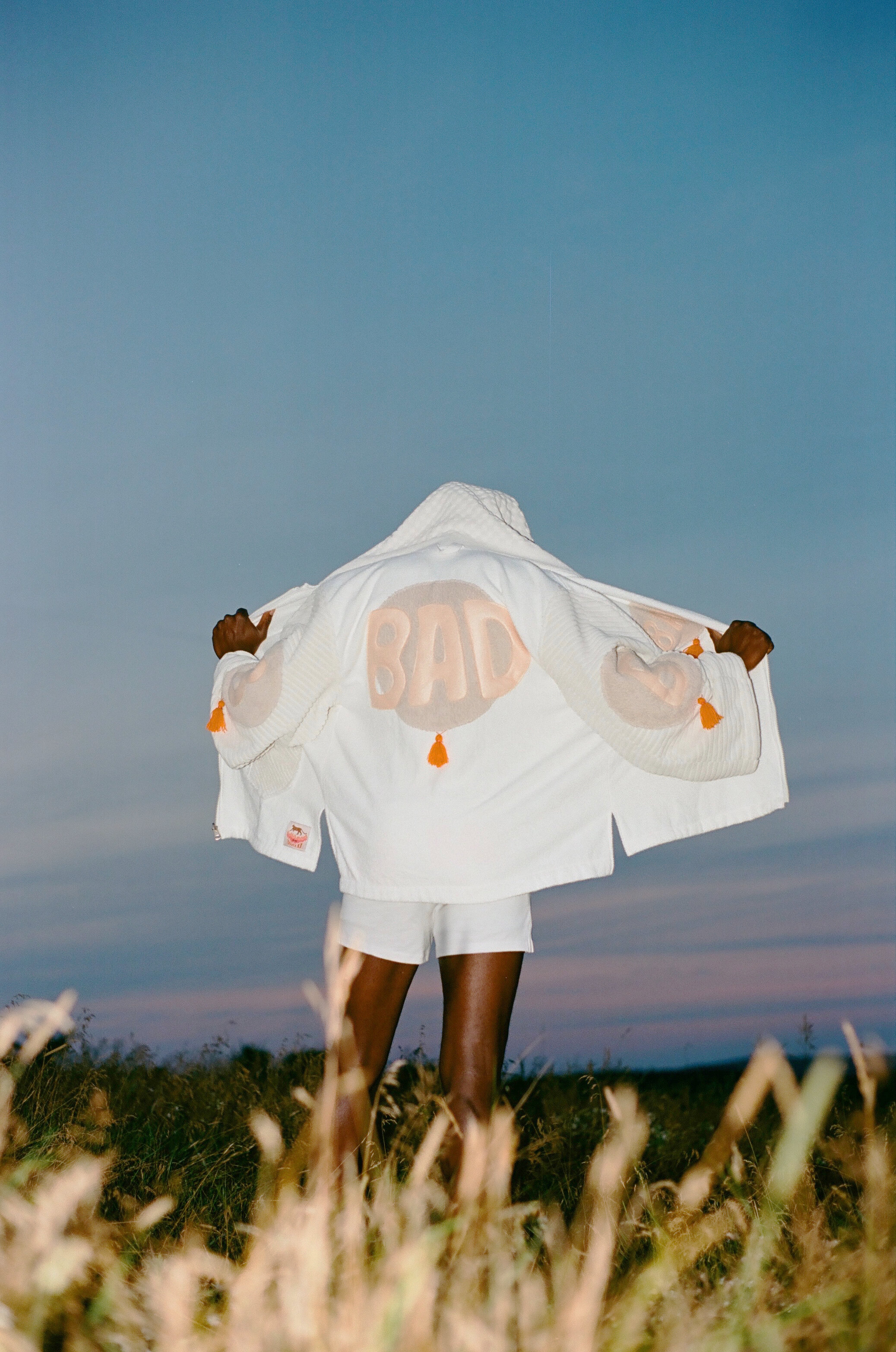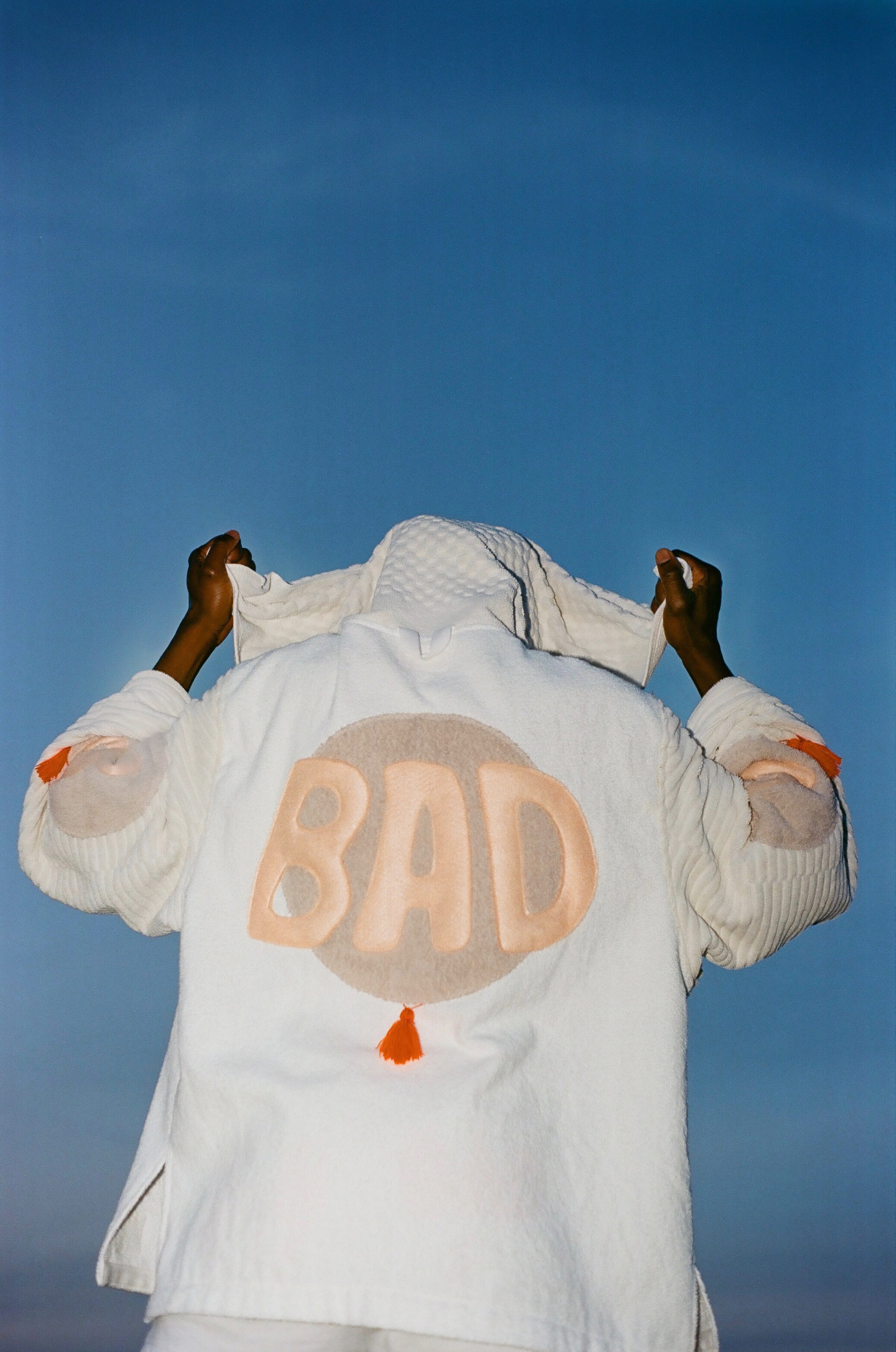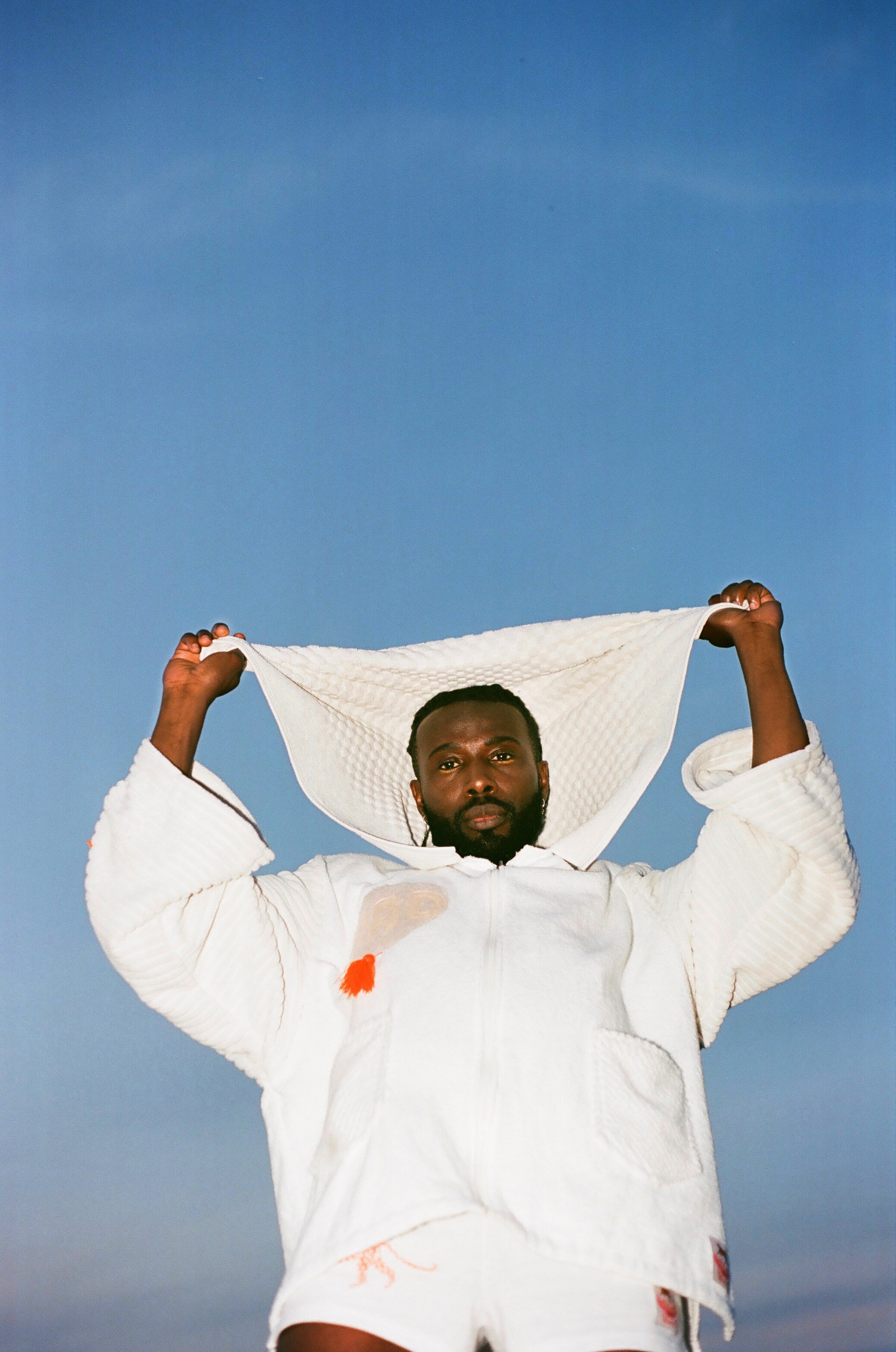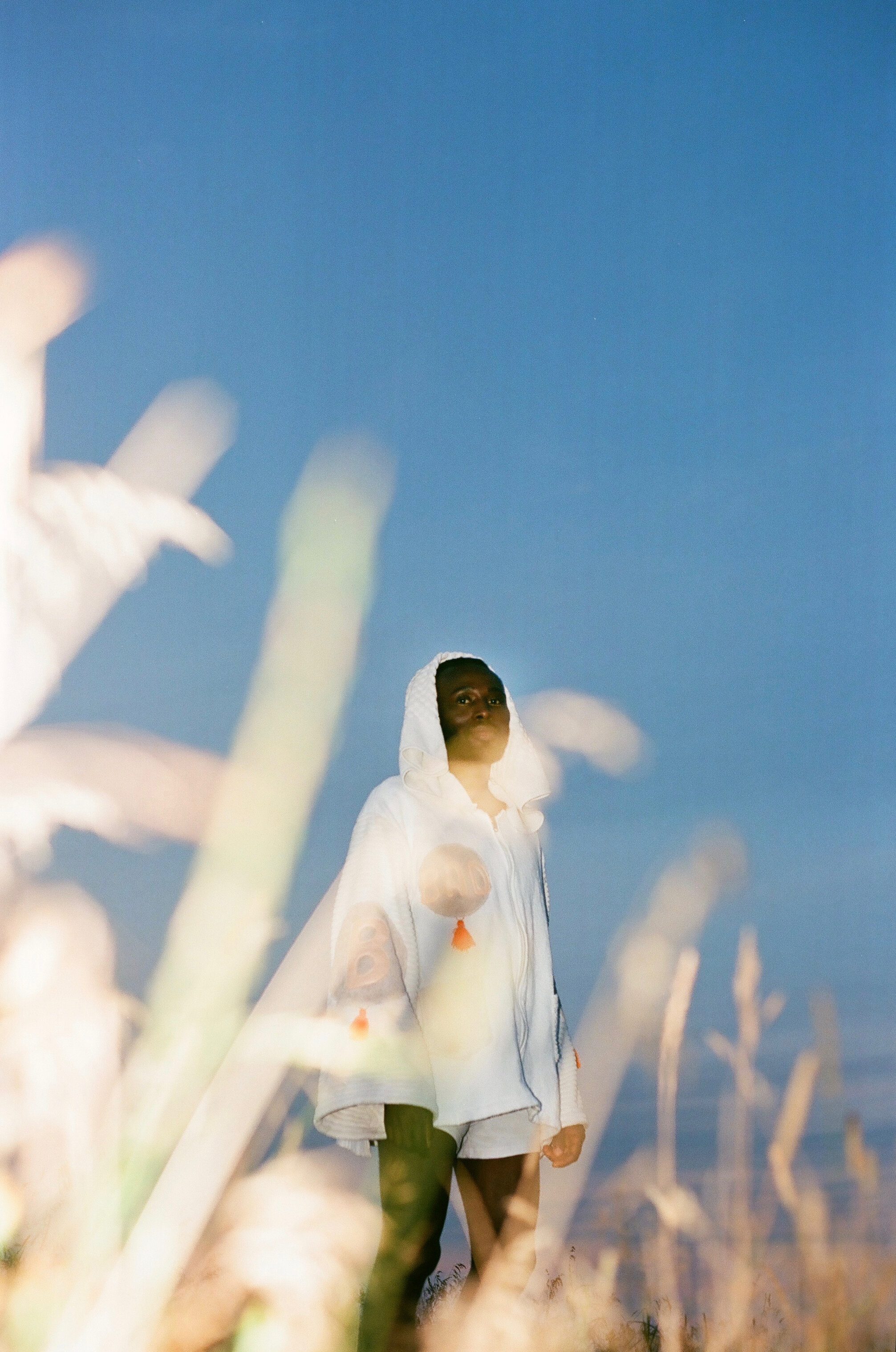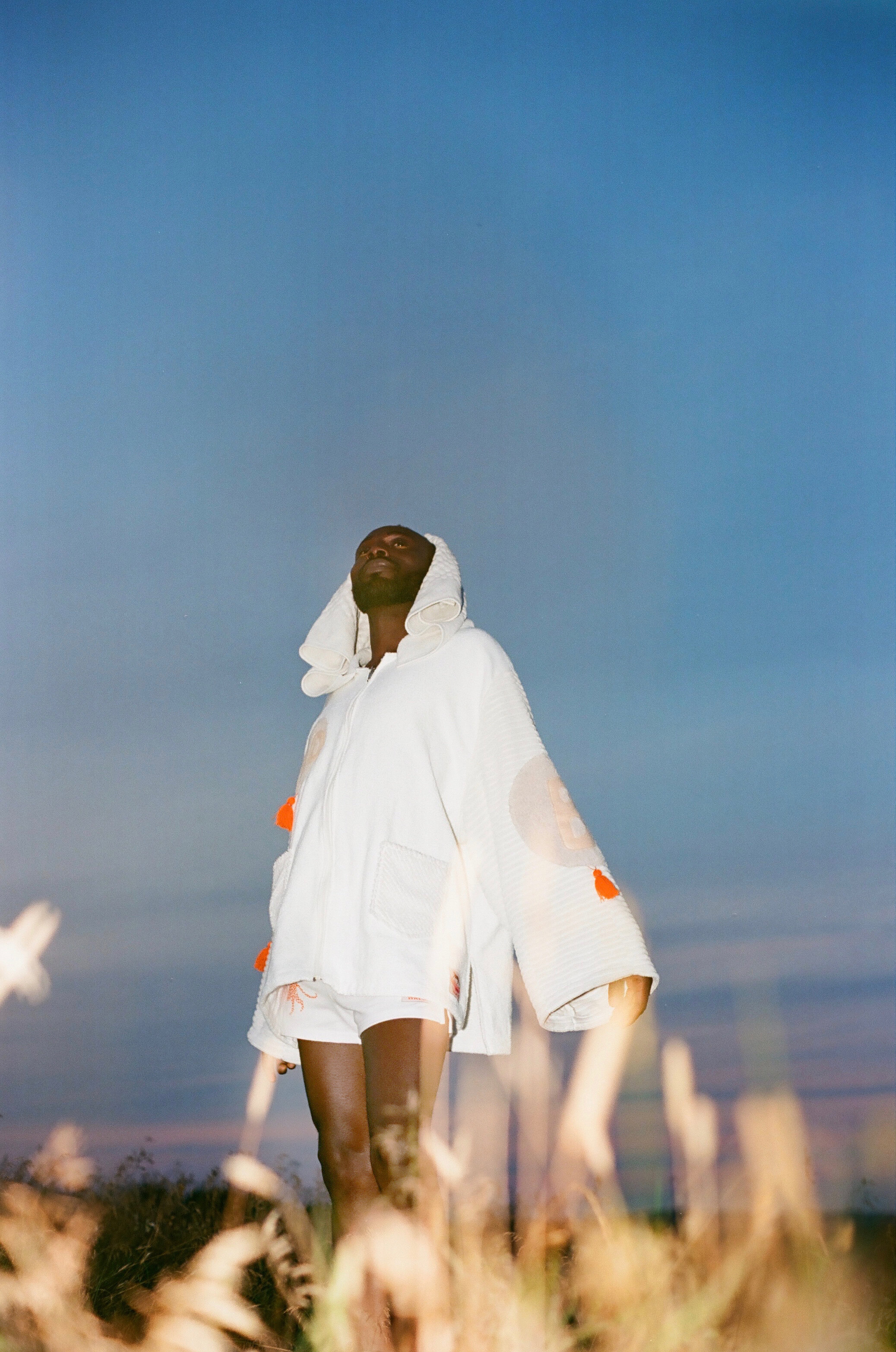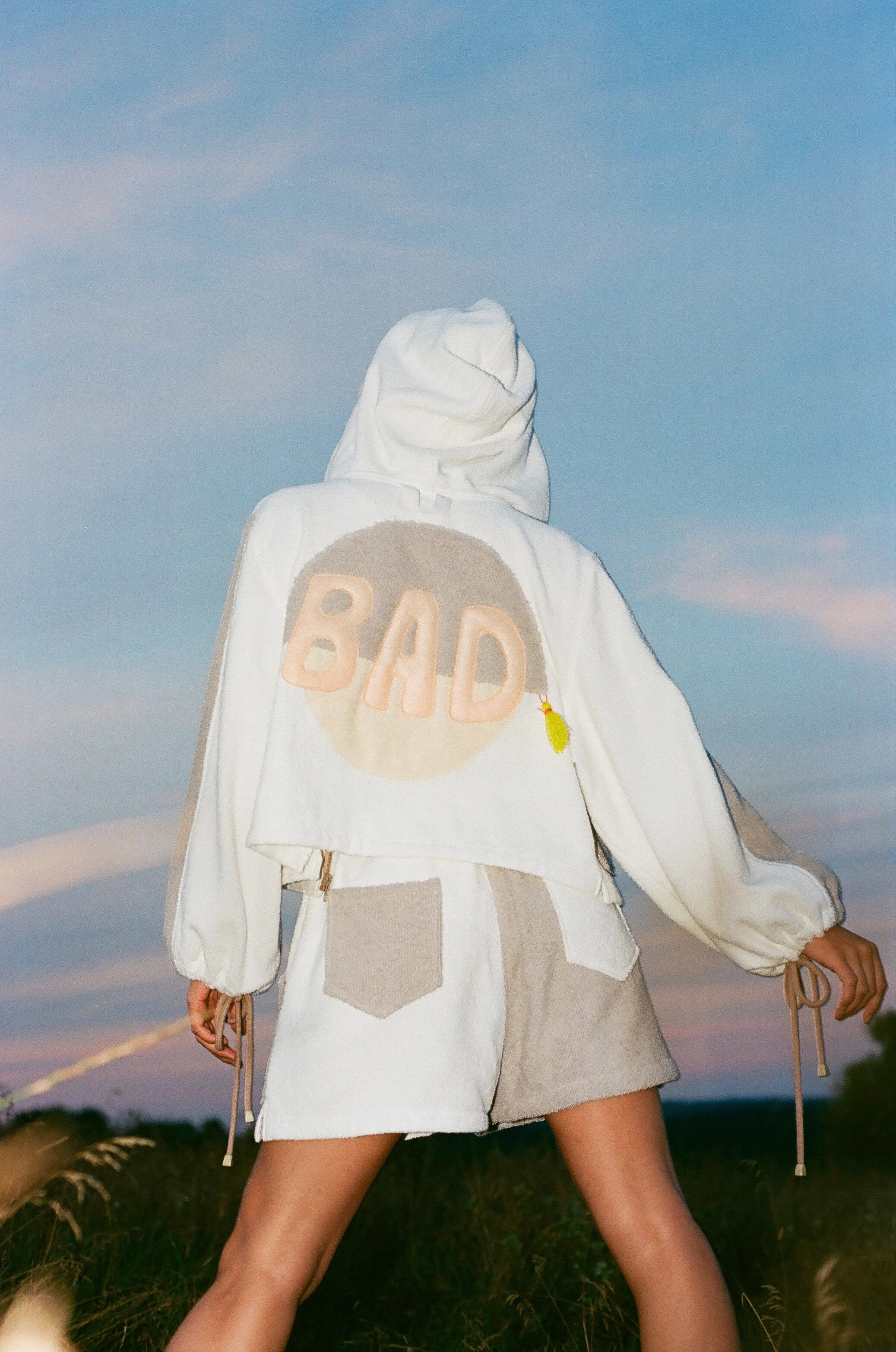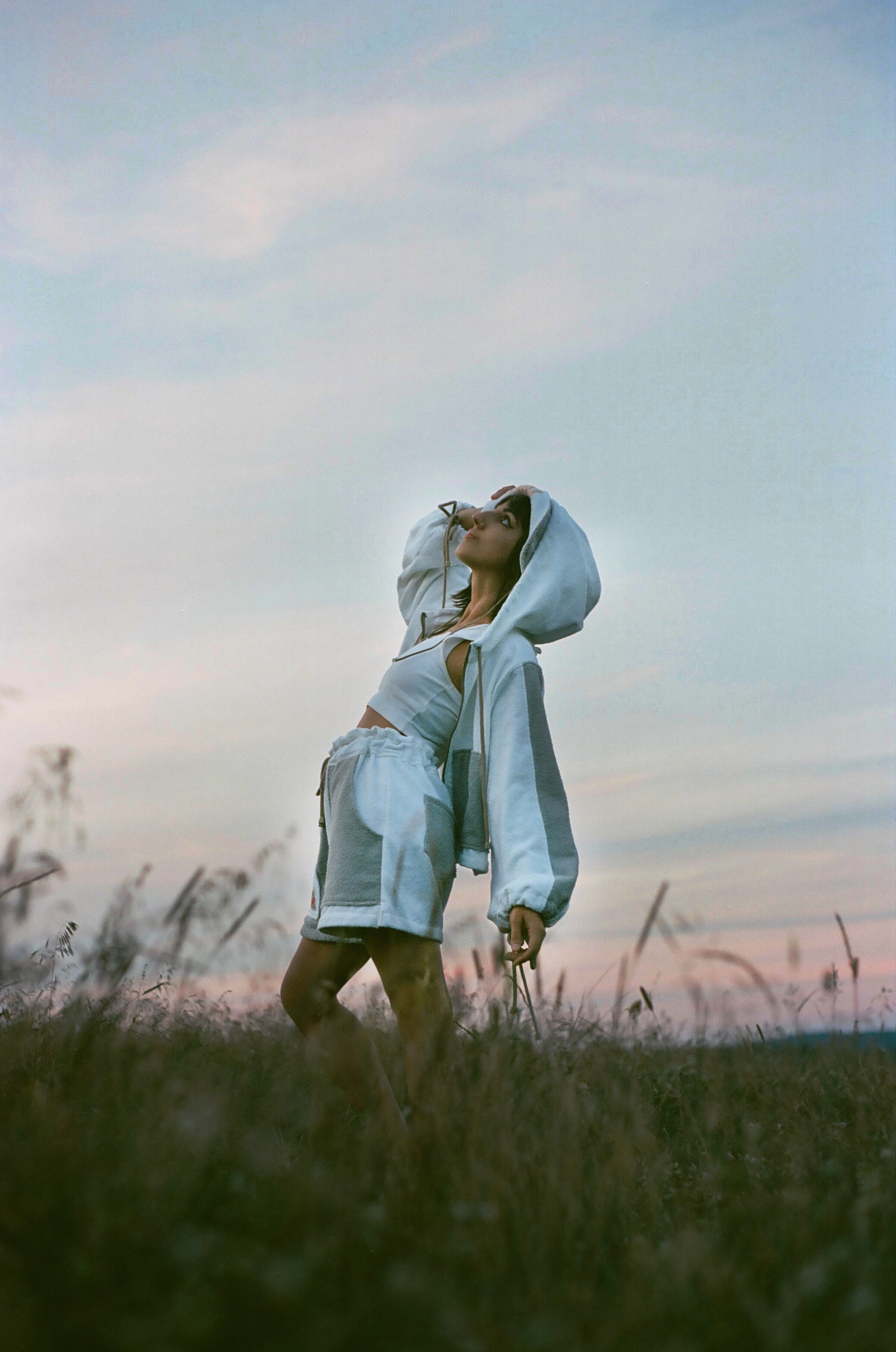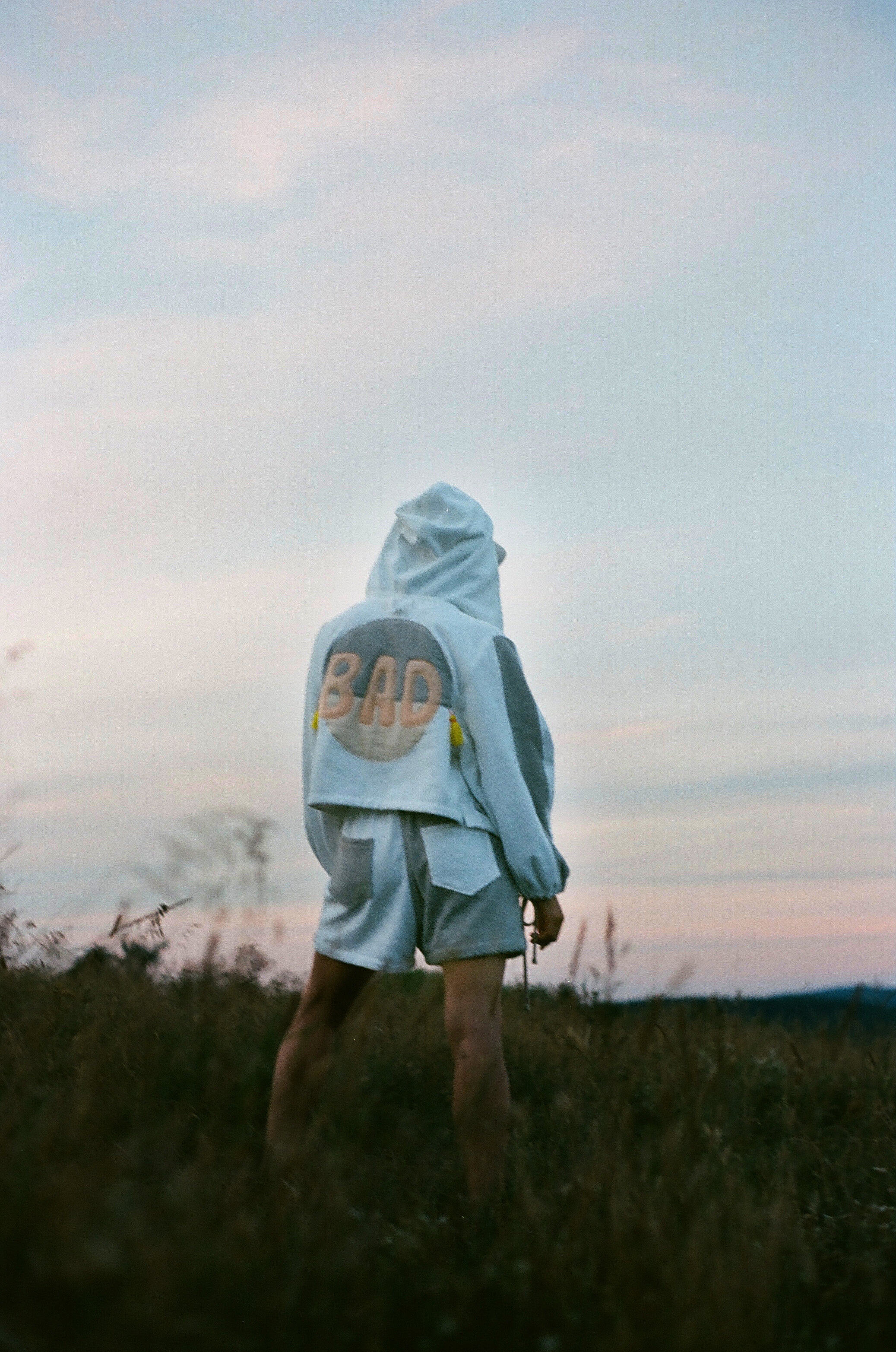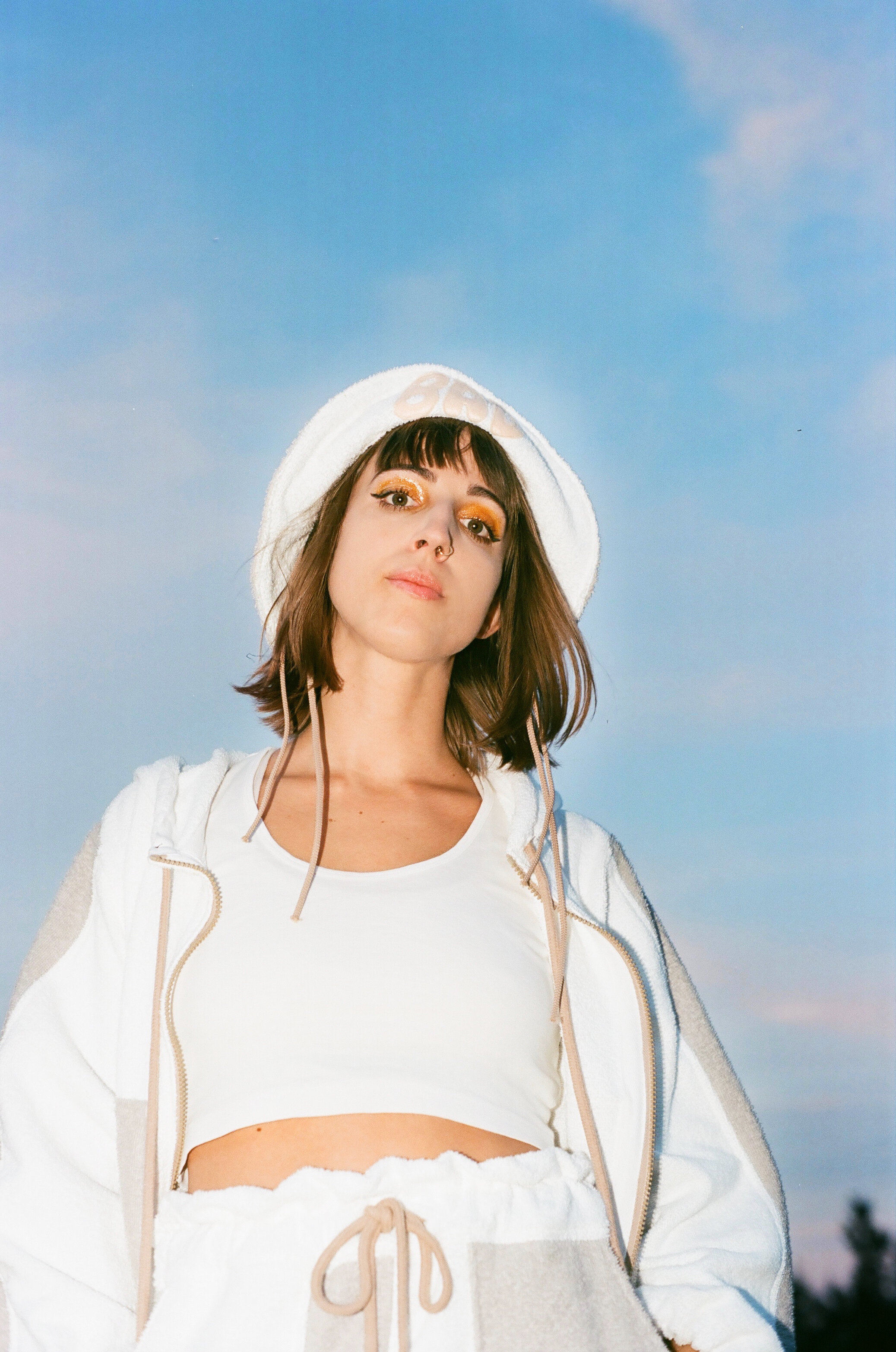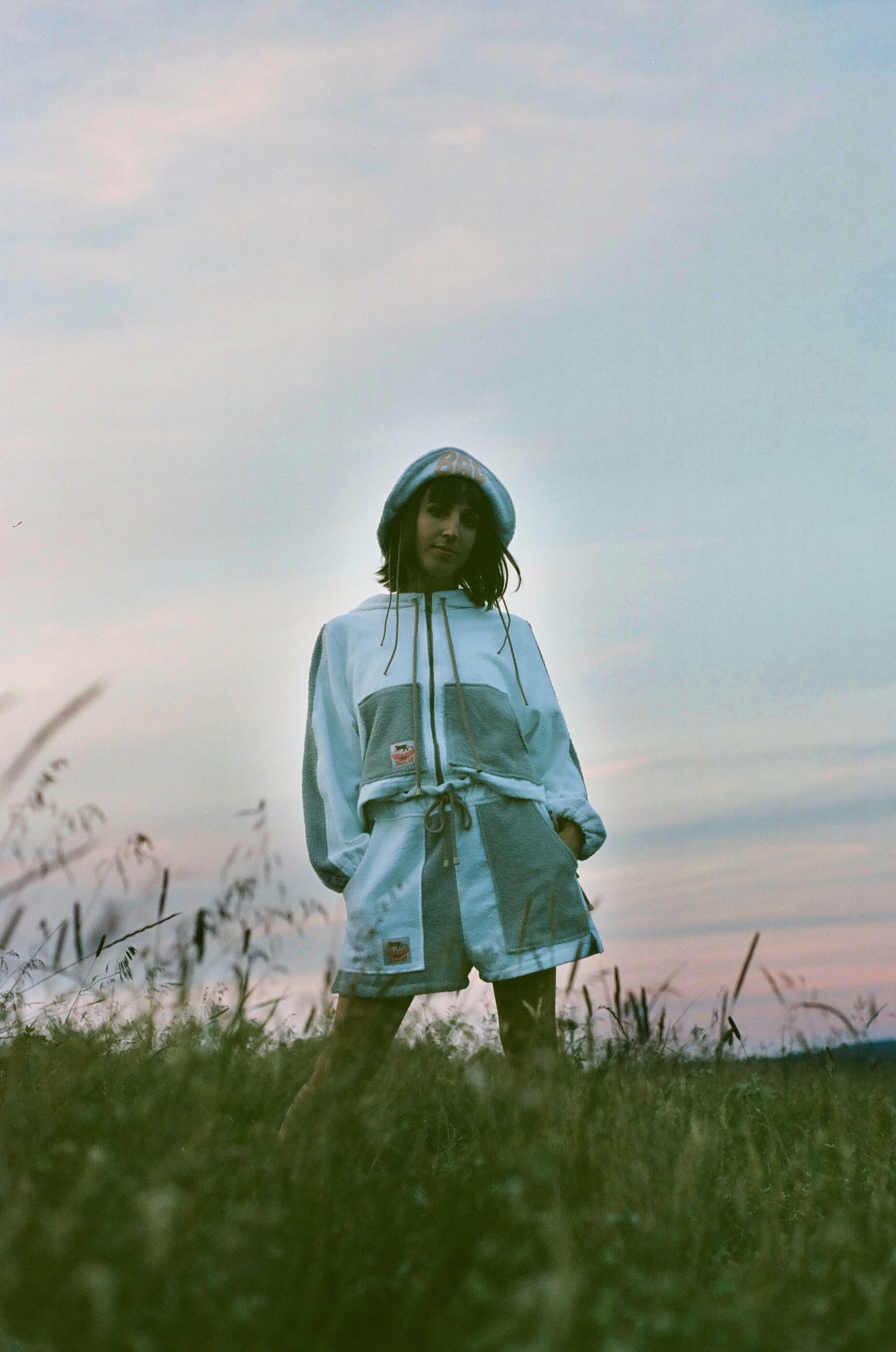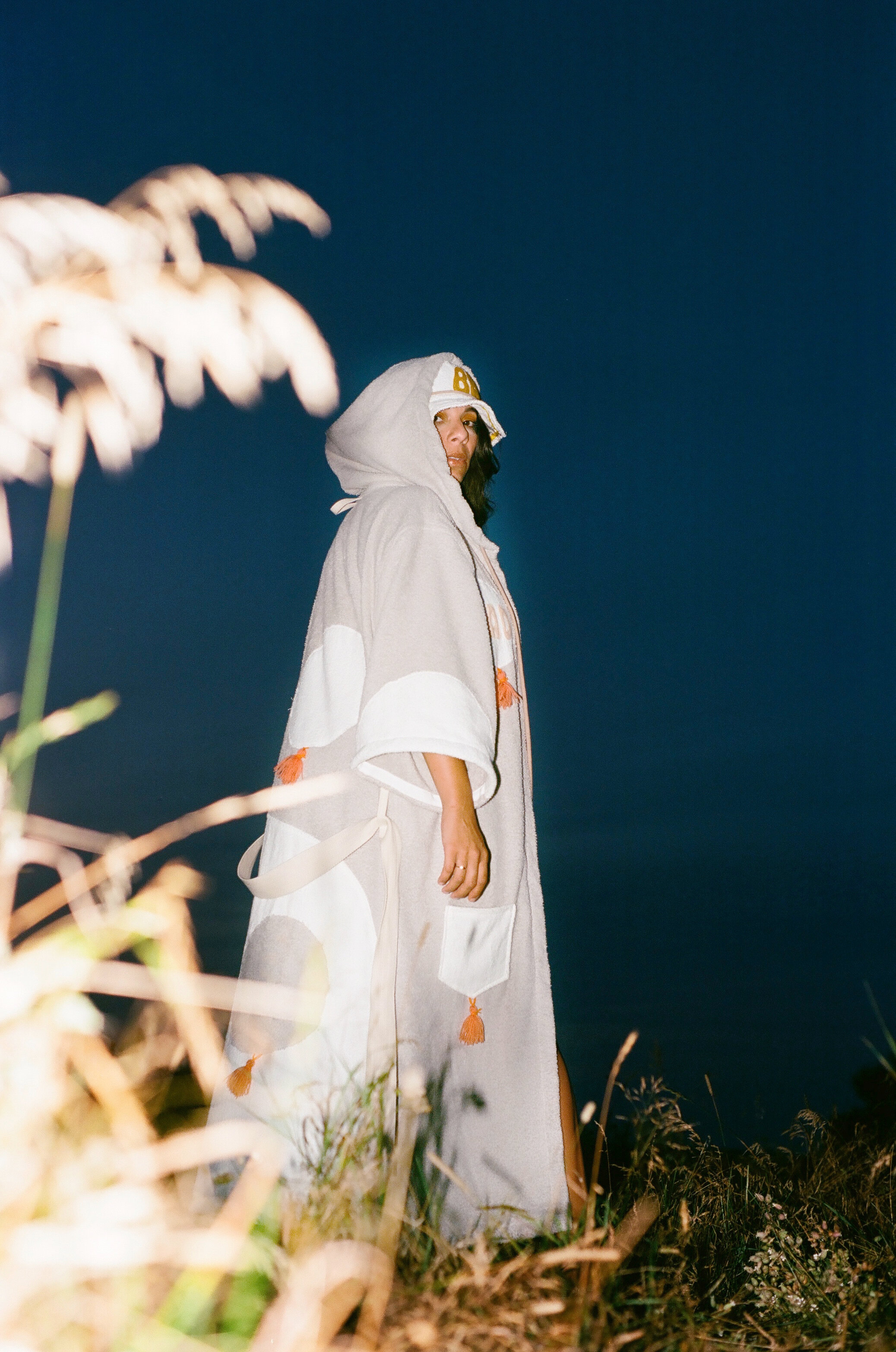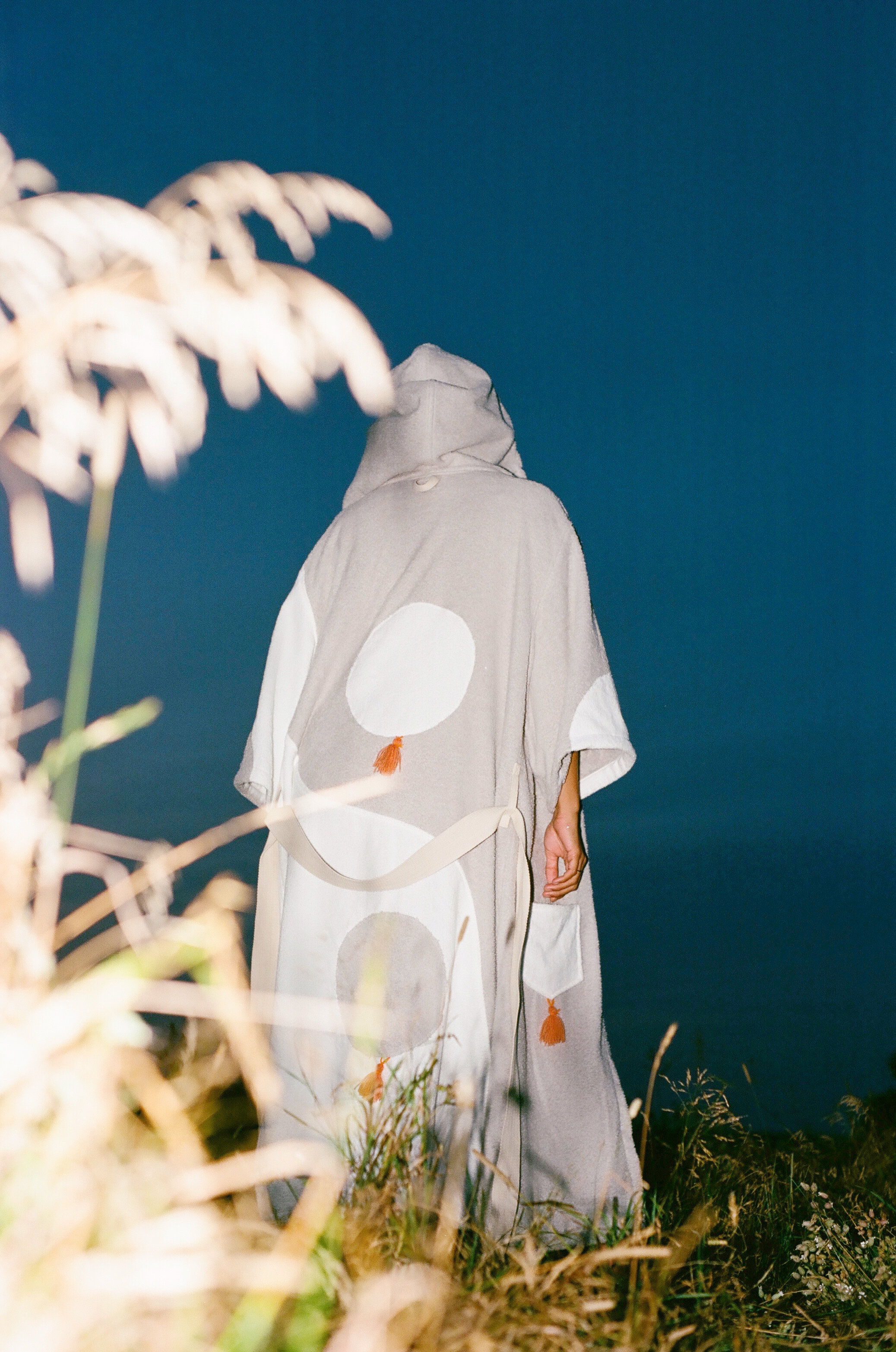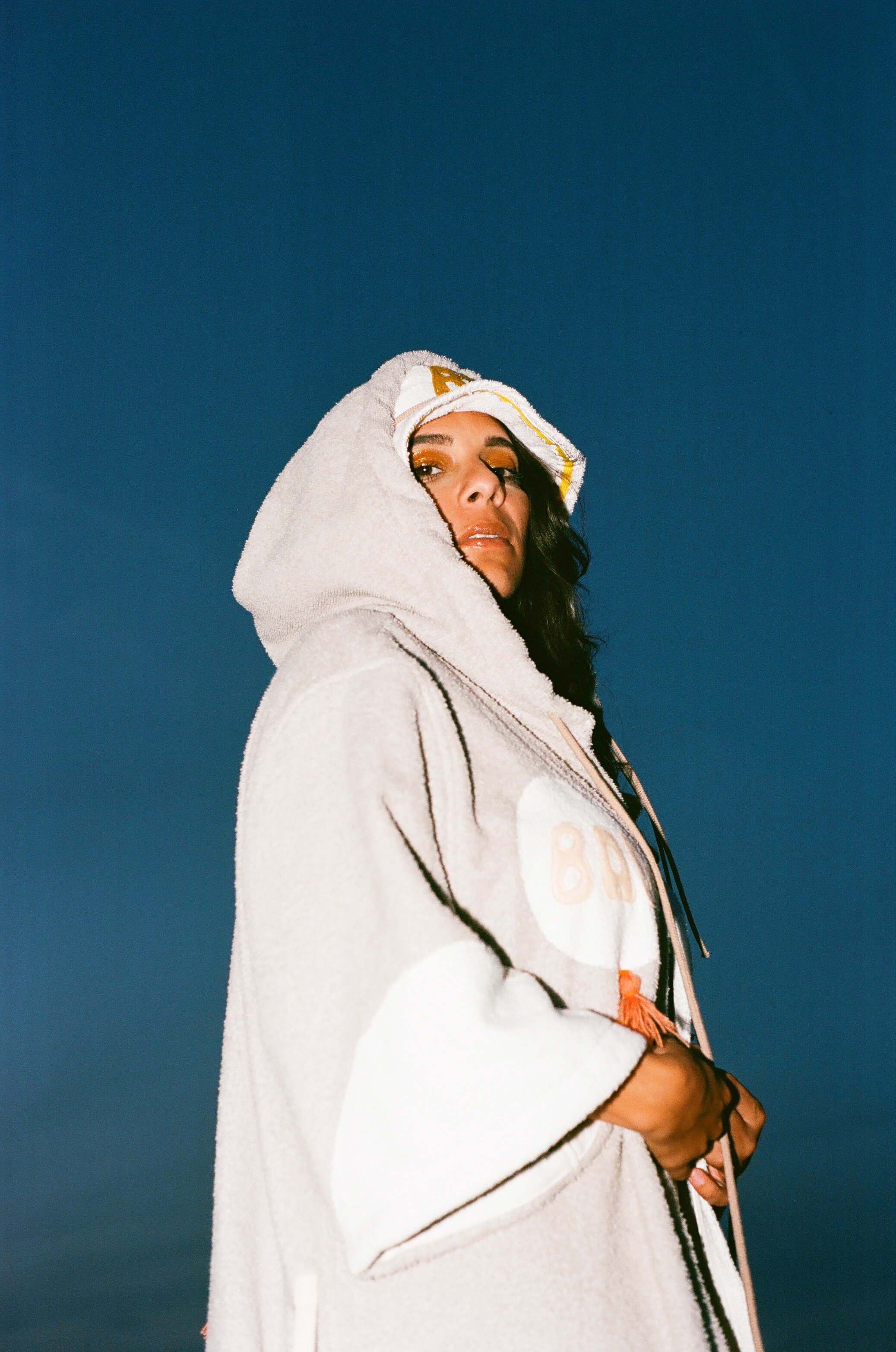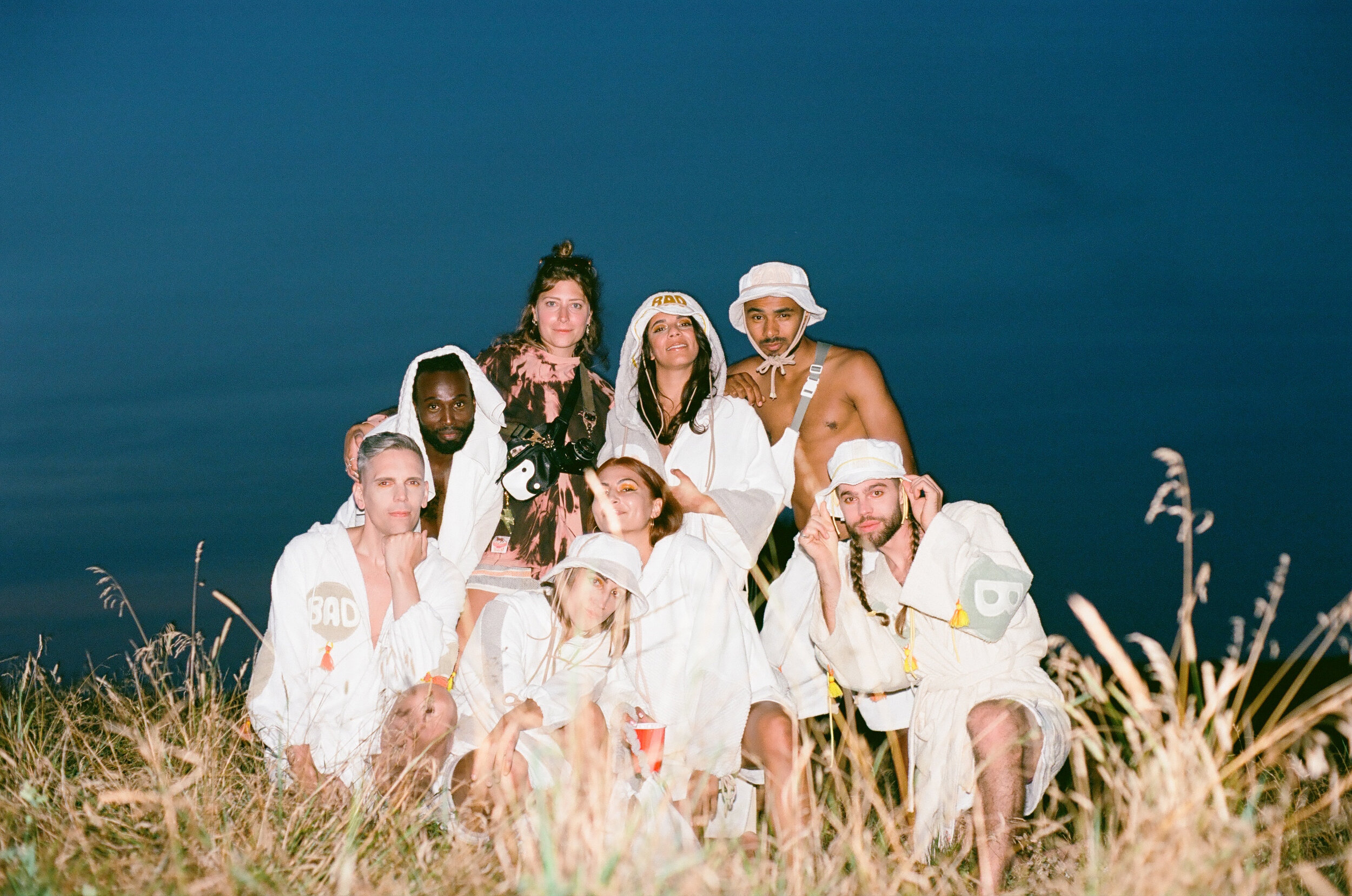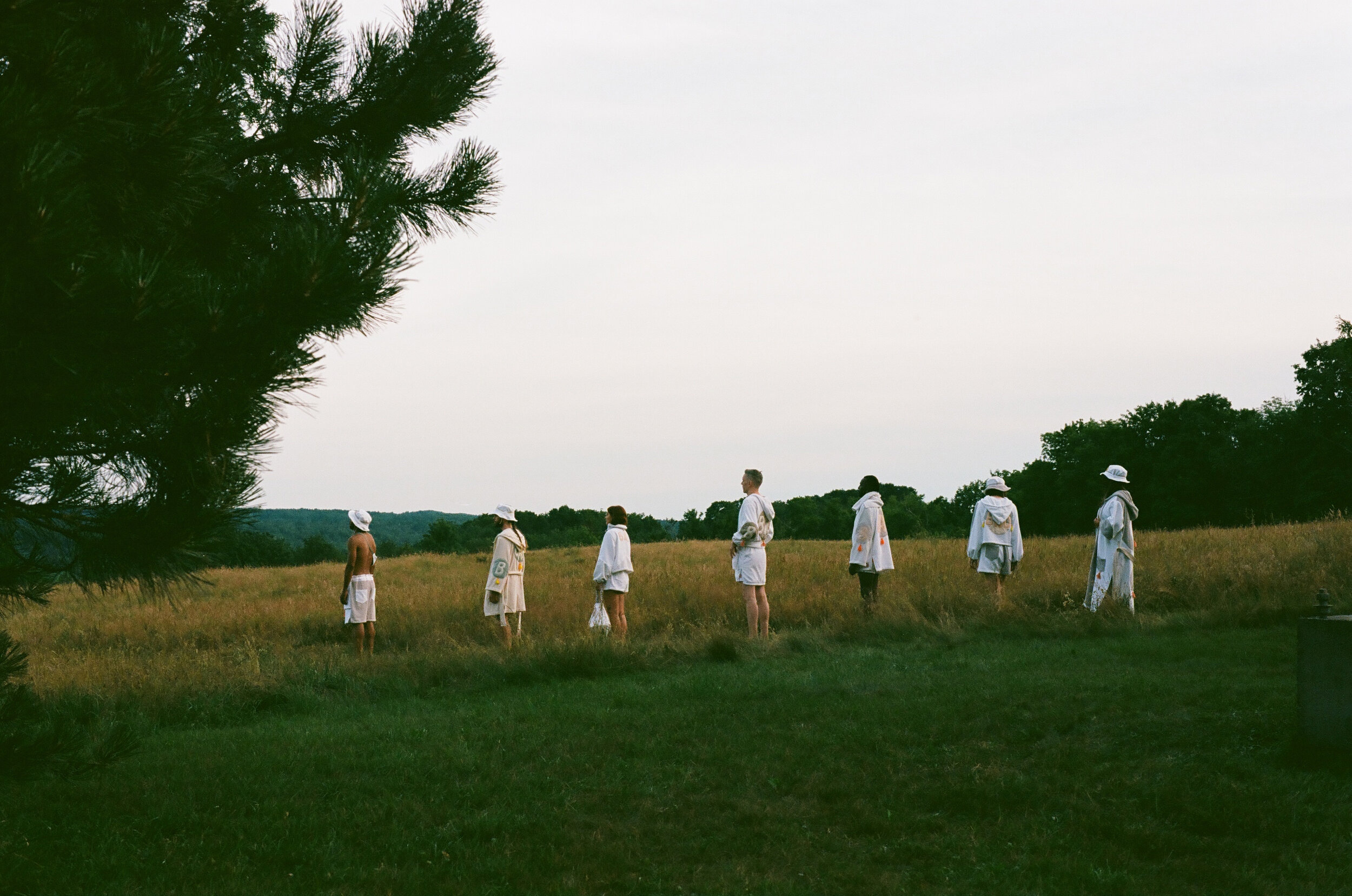Em&May: Montreal's Women-Run, Sustainable Brand Making a Difference with Inclusive Fashion
Em & May Into Orbit collection
It's rare these days to see a brand say that they're sustainable and size-inclusive actually mean it. Em&May is a small but mighty women-run brand based out of the Mile End in Montreal that focuses on swimwear, lounge, lingerie, and more.
It's easy to assume that a brand is a massive production because they have a curated Instagram and a sleek website. In reality, Em&May is a small team of young women figuring it out as they go along, taking on every aspect of the business. They do everything themselves, from creating their garments to customer service and even arguing with Canada Post over the phone to keep shipping prices low.
I wanted to showcase the immense amount of hard work that goes into this project and spotlight the women behind it all. Em&May operates on a made-to-order business model. That allows them to produce the least amount of waste possible while also providing a huge sizing range where you can input your measurements to ensure that your clothes fit you perfectly. They're working hard to make their creative dreams come to life while staying true to their values.
I first found the brand a year and a half ago on Instagram and have been following them ever since. It feels good to know the money I spent at Em&May goes right back into sustaining the lives of a group of creative women instead of a huge faceless corporation.
I've gotten to know Emilie and her amazing team of girls over the last few months and wanted to share a sneak peek of what it's like behind the scenes, so we sat down for an interview.
Em & May swim
Malaika Astorga for Also Cool: When did creativity enter your life? Did it start with fashion, or did you have other hobbies?
Emilie for Em&May: I used to draw a lot when I was younger. I would come home from school and draw in my notebook, which is where I first became interested in art and creativity. Fashion was something that I always really enjoyed.
My grandma used to take me shopping when I was a kid. She would give me some money to run around the mall to buy whatever I wanted. It was the first time I got to pick things out for myself, and when I started to figure out how I wanted to express myself by developing my sense of style.
Despite being interested in fashion at a young age, I never really knew I would study design. When I had just graduated high school in Newfoundland, I went to a school called Textiles, Crafts Apparel and Design, which gave me my first experience with sewing. I was so excited to stay late at school to sew my projects.
Whenever my teachers would give us something to do, I would do three or four. We had the opportunity to have a fashion show and then sell the pieces afterwards, and everyone made maybe five or six garments, and I must've made 30 or 40 pieces. I had an entire collection and extras on top of that. After the show, people could come and shop the pieces, and it was crazy to see people from my high school take an interest in my work.
I had started a Facebook page in school that I would post on all the time, which is how I got my name out there. People began to become a little more aware of what I was doing, which carried over to Em&May, which started when I was in school in Montreal.
I used that Facebook page as the base of the business because I had already accumulated a bit of a following.
Em & May swim
Also Cool: What's the creative scene like in NL? What was your experience like there creatively?
Em: My school was in downtown Newfoundland, but downtown is not like downtown here. It's not super commercial, it's more where artsy people hang out, and there's a lot of cafes, galleries, and local businesses. There's a creative community down there; it's just less fashion and more painting, pottery, etc. but not necessarily clothing.
AC: Why did you decide to move to Montreal? What was your first impression of the city?
Em: The main reason was that my mom is from Montreal, and I always loved her side of the family. We would visit once or twice a year, and I really wanted to know them better, so I started looking into the different schools here.
In terms of first impressions, I came to Montreal when I was a kid or with my friends for concerts or shopping. But when you live in Montreal versus when you come to visit, it is completely different. When you visit, you're mostly downtown on St. Catherine, going to all the big box stores, and everything else is just entirely off your radar.
When I moved here, I started school right away, which was a big adjustment. I got my first job walking down St. Catherine and applied to all those box stores. I got a job at American Apparel, which was my foot in the door to the whole life I've created now. I was only there for a month, and then I got a call for a job from Urban Outfitters, which was my first choice, so I switched over to there. I'm really glad I made that call because that's where I met all my friends, who are even now still a part of the same scene, and two months later, American Apparel shut down.
Em & May sweat set
AC: How did you first get involved with the fashion scene in Montreal?
Em: I met a lot of people through school, and I honestly just said yes to every opportunity given to me. I also engaged with a lot of people and brands that I liked online as well.
When I was in school, the scene was comparable to now. Now it's just so different, especially the side of fashion that I'm a part of now (handmade, sustainable fashion). These are things that I've always been passionate about, but I couldn't have imagined myself going into.
These days people are way more conscious about their money and think a lot about where and who they're buying from. I think the pandemic brought a lot of that into focus.
Em & May sweat set
AC: What was your collab like with Citizen Vintage? What was a valuable lesson you learned from them?
Em: I love them. A girl I went to school with had a studio assistant position that I took over. I would do adjustments for their vintage clothing, cropping and hemming things. I would repair broken things, help out with the tote bags and other things.
They were also so good to me when I started Em&May and gave me 24-hour access to their studio to work. School closed at 11, and if I still had projects to do, I would go to their studio and work there instead. They were so helpful and so supportive.
I was still working for them when I did my first-ever collaboration with them. They wanted to make some swim, and I offered to take over that for them. My brand continued to evolve and grow, turning into a bigger collaboration. They've also purchased wholesale from me before, and we did a bunch of different collections together.
They taught me a lot about planning collections, sizing breakdowns, wholesale and consignment. They guided me through that process, so I had a better idea of what was expected when I got deals with other stores and companies.
Em & May Into Orbit collection
AC: How do you incorporate sustainability into your practice?
Em: When people ask about sustainability, they usually ask about fabric, sourcing, and fibre content, which we pay a lot of attention to. Most of our fabrics are made from either deadstock or natural organic fibres. Our swim is made from Econyl, which is made from ocean waste and plastic bottles. We had also made an activewear collection made of plastic bottles last year. We're always trying to find different OEKO-TEX certified innovation fabrics.
In terms of packaging and shipping, all our materials, paper, boxes, water-activated tapes, etc., are made from 100% recycled paper. We function on a made-to-order business model, which means that we only make what has been ordered to have the least amount of waste possible.
Also, I can pay my employees more than a living wage. There's not a huge amount of production in Montreal anymore, and not many people who graduate end up working as a seamstress. So what's fun about Em&May is that we're able to build off each other and sustain each other's lives because of our business. Our process is also super collaborative, and everyone has creative freedom.
AC: What are some of your favourite spots in Montreal? Any favourite memories to share?
Em: I am a coffee addict, so I love Olimpico and Gamba. I also really enjoy martinis, especially after a long week, so I go to Henrietta, Majestique, and other cute, low-key places.
Em & May Into Orbit collection
AC: What's been the most rewarding thing about running Em&May? How do you feel like you've grown as a person & artist because of the brand?
Em: I think it's awesome that we can be such a small team and are constantly creating pieces that we want to do without a timeline, but also that we're creating pieces with such a huge size range. We have no restrictions for sizing at all so that anyone can buy from us.
It's rewarding to have an idea, I tell the girls, and then we sit down and talk about it – and two days later, it's done and on the website. We don't have to wait six months to a year for these ideas to come to life.
AC: Do you have any small businesses / other artists you'd like to shout out?
Em: Definitely @va1sseau and @rachelsudbury!
AC: What's next for Em&May?
Em: This year I want to be more creative in a way that goes outside of traditional fashion. A lot is coming that's not necessarily ready-to-wear and is more like wearable art. We're going to be incorporating more statement pieces, avant-garde, wearable art with non-traditional elements.
You can meet Emilie and the Em&May team this weekend at our Holiday Pop Up this Saturday, December 11th, from 12-6. See our Instagram post for details.
Em & May Valley bralette
Em&May
Website I Instagram I Facebook I TikTok
Malaika Astorga is the Co-Founder & Creative Director of Also Cool. She is a Mexican-Canadian visual artist, writer, and social media strategist currently based in Montreal.

